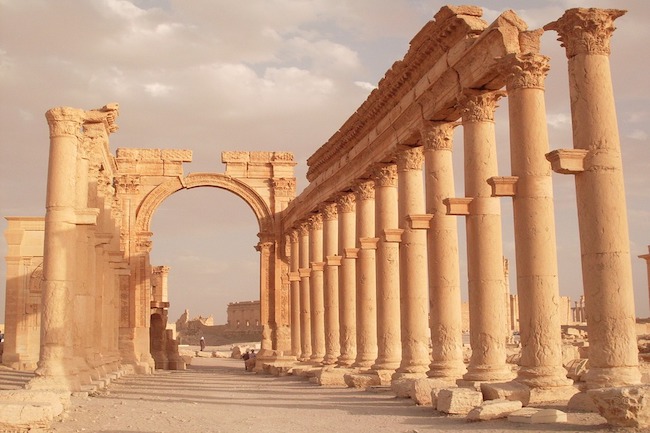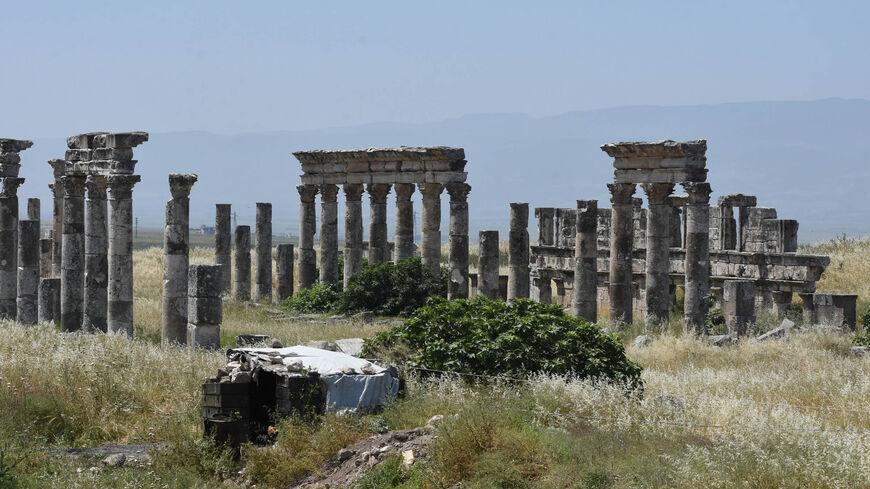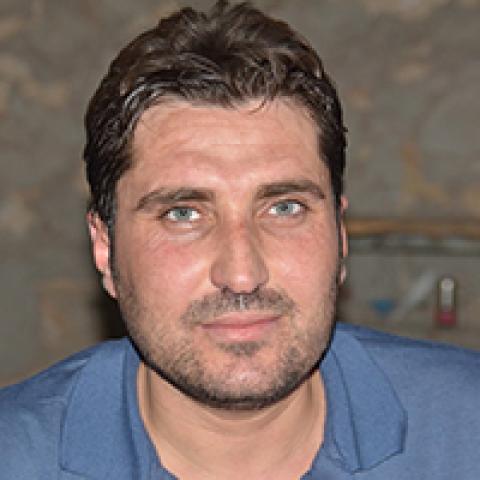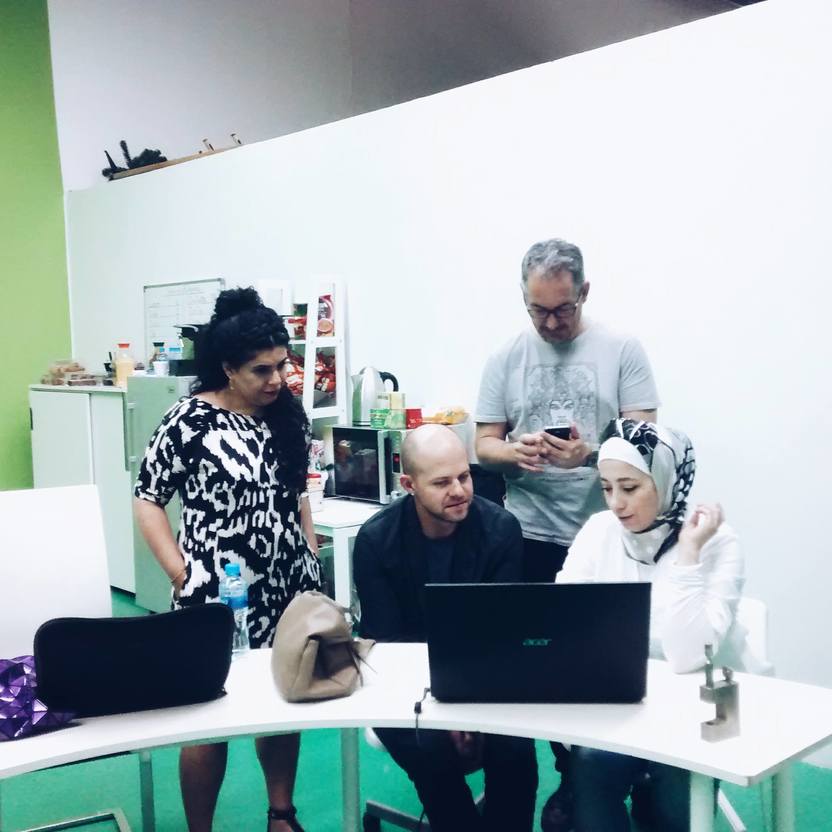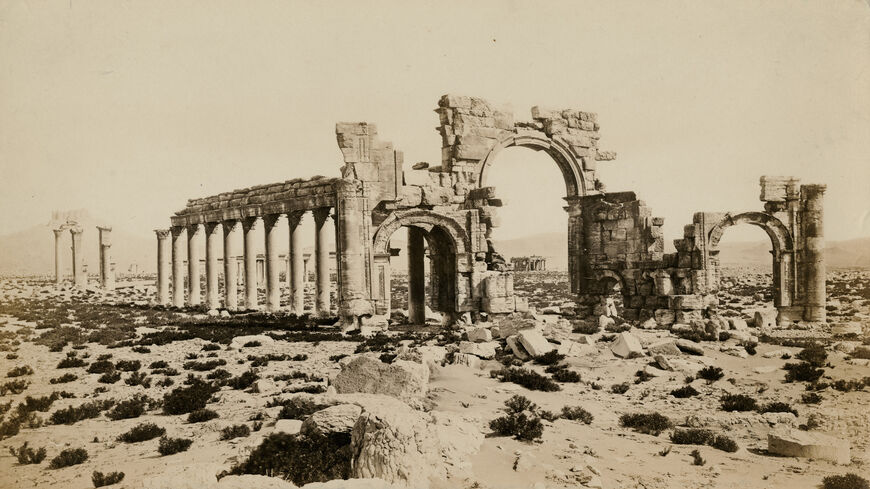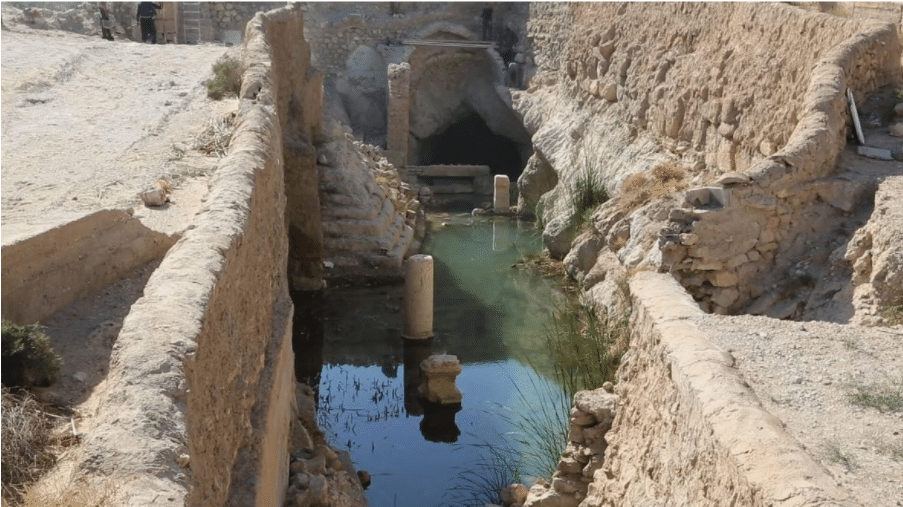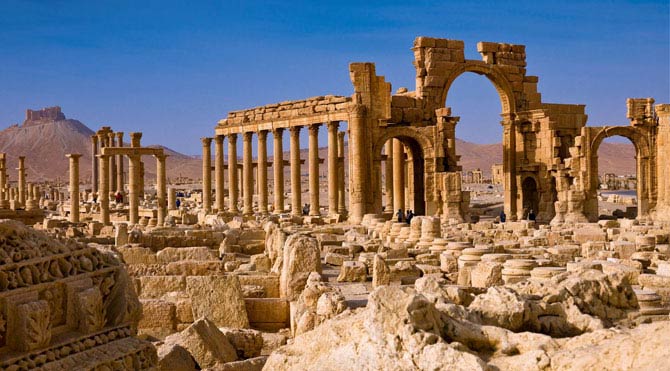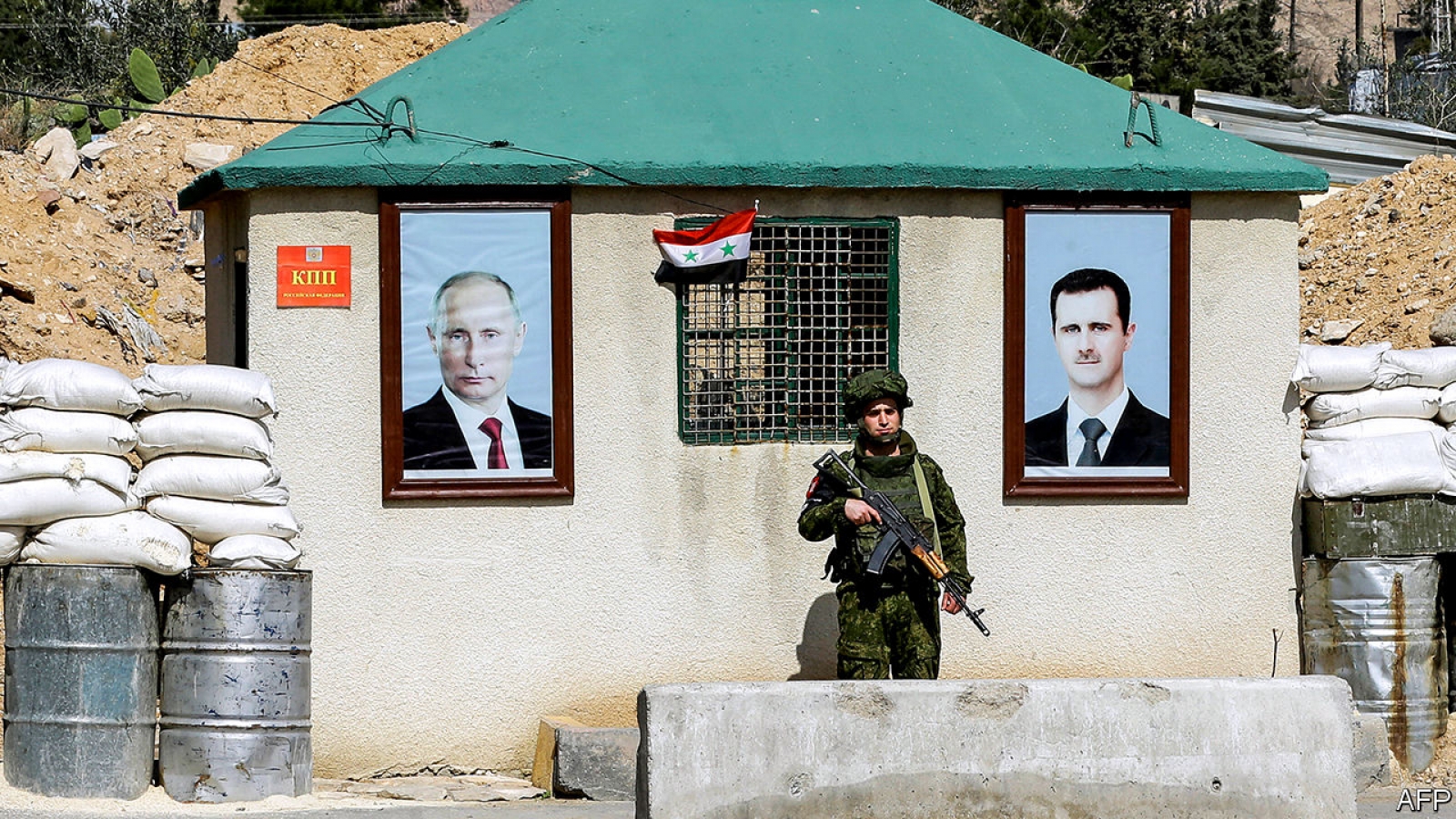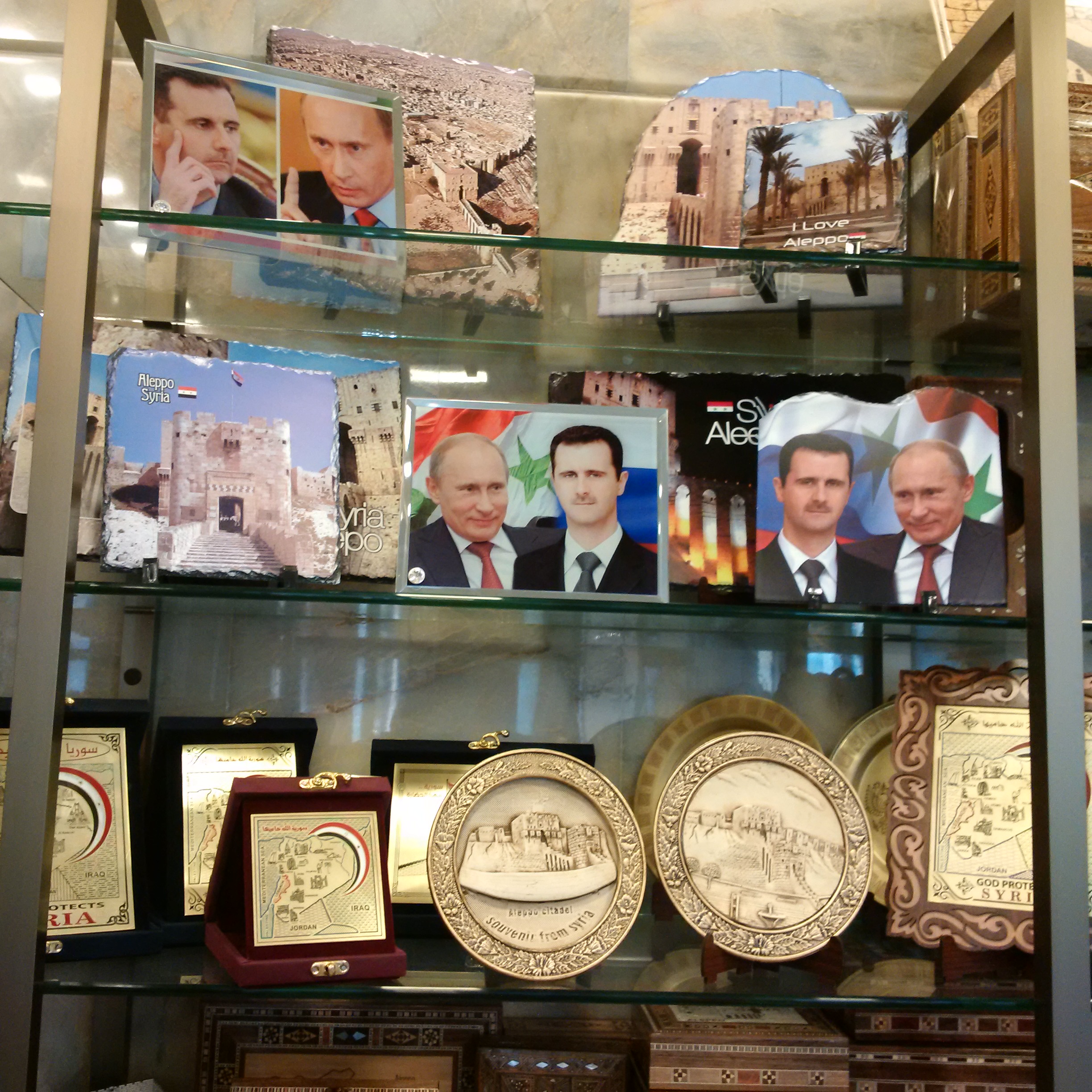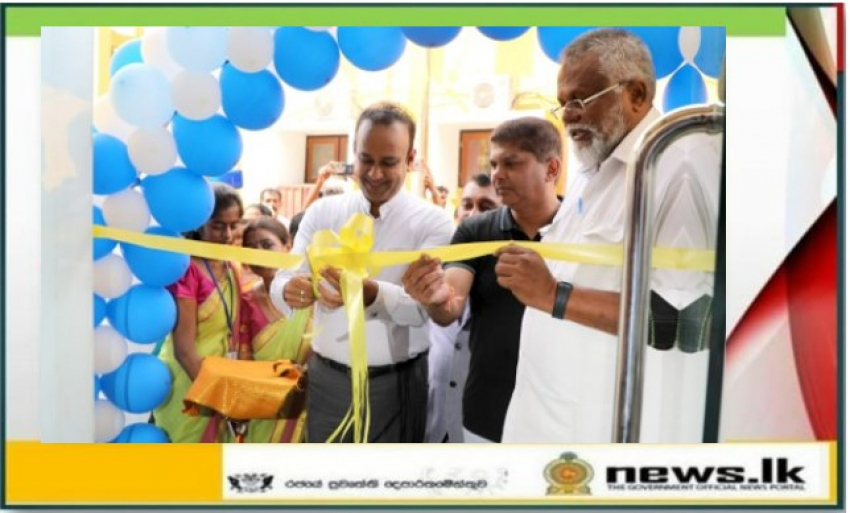The United Nations wants to paint Palmyra as nothing but the finest of all the world has to offer. Like it was some kind of majestic oasis of unity and luxury. They tell you it is too valuable of a historic culture to be lost. They tell you by resurrecting Palmyra you are fighting terrorism and declaring that freedom reigns. That is all promotional propaganda designed to get you to open your wallets, but more importantly to open your hearts, minds and spirits to the entities they serve.
This post started out just as a collection of updates on the events that have occurred in Palmyra in recent times. It turned into a spiritual study as well, demonstrating the truths behind the push to resurrect the “glory” of Palmyra.
I pray that as you view the following God will lead you to a deeper understanding of truth related to that topic and so much more.
spacer
Check out my other posts on this topic:
PHOENIX PALMS RISE FROM THE GRAVE
FORCED RESURRECTION of PALMYRA
spacer
spacer
Weidner, in bibl.). From this inscription it can be learned that Tadmor belonged to Amurru, which here means not simply the “West” but is connected in some way to the (by then dissolved) state of Amurru, founded by the dynasty of Abdasrita in the 14 th century (see *El-Amarna Tablets and *Amorites ). This territory was inherited by the Arameans.
|
In Egypt, the Amorites were called “Amar” and were represented on monuments with fair skin, light hair, blue eyes, curved noses, and pointed beards. They were supposedly men of great stature. One of their kings, Og, was described by Moses (Deuteronomy 3:11) as the last “of the remnant of the giants,” and whose bed was 13.5 feet (4 meters) long.
|
|
Amorites [N] highlanders, or hillmen, the name given to the descendants of one of the sons of Canaan ( Genesis 14:7 ), called Amurra or Amurri in the Assyrian and Egyptian inscriptions. On the early Babylonian monuments all Syria, including Palestine, is known as “the land of the Amorites.”
|
|
The idea that the Amorites were giants is supported by the report of the spies whom Moses sent through the land of Canaan. The Amorites were one of the people groups they saw (Numbers 13:29), and they claimed that “all the people whom we saw in it are men of great stature” (Numbers 13:32).
|
spacer
spacer
spacer

spacer
History: Palmyra and the Silk Road
- Last Updated: Nov 1, 2022 10:07 AM

Britannica School
Useful Weblinks
-
This entry by Janice J. Terry is published in Encyclopedia of the Ancient World: Prehistory to 600 CE and is accessible via the College’s subscription to Ancient and Medieval History database.
-
This entry by Edward D. English is published in Encyclopedia of the Medieval World, vol. 2 and is accessible via the College’s subscription to Ancient and Medieval History database.
-
This weblink is to an article by Albert E. Dien from Stanford University.
-
The Women of Palmyra–Textile Workshops and the Influence of the Silk Trade in Roman Syria
This article was written by Cynthia Finlayson, Ph.D., R.P.A., Assistant Professor-Art History & Curatorial Studies Brigham Young University. -
The State Hermitage Museum contains the Palmyrian Tariff, a stone slab with an inscription in Greek and Aramaic.
-
The Tax Law of Palmyra: Evidence for Economic History in a City of the Roman East
This article by J.F. Matthews featured in The Journal of Roman Studies is accessible via the College’s subscription to JStor. -
This weblink is to the website The Iris: Behind the Scenes at the Getty. Follow the link to stories and perspectives that complement the online exhibition ‘The Legacy of Ancient Palmyra’.
![]()
We know that for quite some time now, the elite have been rabidly searching out everything they can uncover about the ancients, their monuments, their empires, their structures, their gods. In this next article you will see they have been studying Palmyra and the areas around it using all their latest technologies.
Why the vibrant city of Palmyra was located in the middle of what is now the Syrian Desert
Date: June 20, 2012
- Source: The Research Council of Norway
- Summary: Norwegian archaeologists have solved one of the great puzzles of the Roman Empire: Why was the vibrant city of Palmyra located in the middle of the Syrian Desert?
Norwegian researchers collaborated with Syrian colleagues for four years to find answers.
“These findings provide a wealth of new insight into Palmyra’s history,” says project manager Jørgen Christian Meyer, a professor at the University of Bergen.
New research using modern archaeological methods
The Bergen-based archaeologists approached the problem from a novel angle — instead of examining the city itself, they studied an enormous expanse of land just to the north. Along with their Syrian colleagues from the Palmyra Museum and aided by satellite photos, they catalogued a large number of ancient remains visible on Earth’s surface.
“In this way,” explains Professor Meyer, “we were able to form a more complete picture of what occurred within the larger area.”
The team detected a number of forgotten villages from ancient Roman times. But what finally solved the riddle of Palmyra was the discovery of the water reservoirs these villages had utilised.
Not a desert
Professor Meyer and his colleagues came to realise that what they were studying was not a desert, but rather an arid steppe, with underground grass roots that keep rain from sinking into the soil. Rainwater collects in intermittent creeks and rivers called wadi by the Arabs.
The archaeologists gathered evidence that residents of ancient Palmyra and the nearby villages collected the rainwater using dams and cisterns. This gave the surrounding villages water for crops and enabled them to provide the city with food; the collection system ensured a stable supply of agricultural products and averted catastrophe during droughts.
Local farmers also cooperated with Bedouin tribes, who drove their flocks of sheep and goats into the area to graze during the hot season, fertilising the farmers’ fields in the process.
Safe trade route
Palmyra’s location also had a political foundation. Important east-west trade routes, including along the Euphrates River to the north, were not under the control of the Romans to the west or the Persians to the east. Local lords and chieftains demanded high fees for passage.
This practice of extortion translated into a tremendous opportunity for the Palmyrians; they joined forces with the Bedouins to provide security, beasts of burden and guides through the desert.
“Tradesmen from Palmyra made the most of the city’s unique location to build up a comprehensive trade network,” says the professor. “This explains much of the city’s prosperity.”
Arable land in this time of need
The solution to the mystery of Palmyra can also teach us something today. As the world seeks arable land to feed its billions, we can learn from the Palmyrians’ experience. If they were able to cultivate the desert soil almost 2 000 years ago, surely we can do the same with all the available modern aids and methods. (Ya, and using extortion those who control the access can get rich off the backs of the rest of us.)
“Occasionally an enormous amount of rain falls in the desert,” says Professor Meyer. “Anyone can see how green the desert becomes after the rain. The Palmyrians must have realised the potential of this type of land, which covers large areas of our planet.”
The project has received funding of over NOK 9 million from the Research Council of Norway’s comprehensive funding scheme for independent basic research projects (FRIPRO).
Why have IS militants spared ancient Palmyra? – France 24
Issued on: Modified:
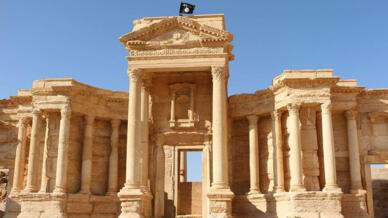
The international community has expressed alarm over the fate of the ancient Syrian city of Palmyra, which was seized by the Islamic State group on May 20. But almost two weeks later, Palmyra’s monuments are apparently still standing.
The news has come as a surprise to many, since the Islamic State (IS) group has drawn international condemnation for destroying irreplaceable ancient treasures in the Iraqi cities of Mossul, Nimrod and Hatra.
The jihadist movement has shared videos of a member destroying an Assyrian winged bull at a museum in Mosulwith a jackhammer. It has boasted of turning bulldozers on the biblical city of Nimrudand smashing 2,000-year-old artifacts with sledgehammers in the northern city of Hatra.
But according to several media outlets, it has nevertheless spared the cherished Syrian heritage site in Palmyra – at least for now.
Instead of demolishing the city’s archaeological treasures, the IS group announced that it had destroyed the prison in Palmyra, known in Arabic as Tadmur. The prison, a longtime symbol of the Syrian regime’s repression, was blown apart with explosives on May 30.

Self-proclaimed IS members have gone so far as to declare that ancient Palmyra, a UNESCO World Heritage site, is not in danger.
“Concerning the historical city, we will preserve it and it will not be damaged, God willing, but what we will do is destroy the statues that the infidels used to pray to,” a man alleging to be Abu Leith, an IS group commander, told a Syrian opposition radio station.
“As for the historical monuments, we will not touch them with our bulldozers as some tend to believe,” the man was quoted as saying by the International Business Times.
PR campaign
According to some analysts, the IS group is not attempting to win sympathy among locals or foreigners by sparing Palmyra’s monuments. The announcement is, in fact, consistent with its brand.
“There is no change in strategy,” said Wassim Nasr, a FRANCE 24 journalist who specialises in jihadist movements. “From the beginning, the group has been clear that it is only out to destroy statues.”
The jihadists are nevertheless waging a PR battle in Palmyra, as elsewhere in Syria and Iraq.
“The IS group’s target in Palmyra wasalways the jail. By destroying it they position themselves as liberators of those oppressed by [President Bashar al-] Assad’s regime. And that is consistent with their strategy,” Nasr said.
Indeed, Palmyra’s prison is notorious as the site of a 1980 massacre in which as many as 800 inmates may have been killed, many of them Islamist opponents of then president Hafez al-Assad, Bashar’s father and predecessor.
Daily newsletterReceive essential international news every morning
Political prisoners from Syria and other Middle Eastern countries, and from different religious groups, have been tortured and locked up in Palmyra’s prison over the years.
Assad officially closed the prison in 2001 as he sought to improve Syria’s image internationally. The prison only reopened in 2011, officially to lock up the militants who rose up to fight Assad as the Arab Spring spread throughout the region. But some observers wonder if the prison was ever closed, and if it didn’t instead continue to house “disappeared” Syrian dissidents.
Since it took over Palmyra, the IS group has shared never-before-seen images from inside the prison, including those of jail cells almost devoid of light.
The Syrian regime transferred all of Palmyra’s prisoners before the jihadists took over the town – a move that Nasr said robbed the IS group of a priceless PR moment.
This article was translated from its original in French.
spacer
The elite have been bombarding the world with promotional ads, events, and online social media, websites and videos about “why Palmyra is so important and valuable” and making people believe that it is virtuous and vital for us to support the rebuilding of the sites.
 “It would be folly to believe that the survival of archaeological reports and photographs could in any way compensate for the destruction or looting of the ancient remains. The preservation of buildings and objects that managed to survive for two thousand years of Palmyra’s history has to be a priority wherever civilization is cherished.”
“It would be folly to believe that the survival of archaeological reports and photographs could in any way compensate for the destruction or looting of the ancient remains. The preservation of buildings and objects that managed to survive for two thousand years of Palmyra’s history has to be a priority wherever civilization is cherished.”
Beauty of Palmyra: Look at Ancient City’s Heritage Sites (PHOTOS)

Syria’s top archeologist and the director of antiquities, Maamoun Abdelkarim, told Sputnik that some of the ruined cultural sites in the city could be restored.
“Today is our happiest day because the city has been liberated from terrorists and its historical monuments will be restored,” he said, adding that hundreds of precious items from Palmyra’s museum had earlier been moved to safety.
Fortunately, Daesh militants left a theater, the city’s main street, walls and four ancient gates untouched. But that’s really is a drop in the ocean of sorrow, as since the jihadists took control of Palmyra last May they destroyed a lot of the city’s ancient heritage sites.
Below are just some of the historic sites from Palmyra:




spacer
Inside Tadmur: The worst prison in the world?

When Islamic State seized Palmyra in Syria last month, one of the first things it did was blow up the Tadmur prison – the country’s most notorious jail, where for decades, political dissidents were detained and tortured. The BBC’s Soumer Daghastani looks back at its history.
Westerners know Palmyra for its ancient Greco-Roman ruins, but the Arabic term for the place, Tadmur, gives most Syrians goose-bumps.
It’s synonymous with death, torture, horror, and madness.
The prison was built by the French in the 1930s, in heart of the desert, about 200km northeast of Damascus. But it was during Hafez al-Assad 30-year rule between 1971 and 2000 that it gained its current reputation. Thousands of political dissidents were reported to have been humiliated, tortured, and summarily executed there.
“It’s utterly unfair to call it a prison. In a prison you have basic rights, but in Tadmur you have nothing. You’re only left with fear and horror,” says Palestinian writer Salameh Kaileh, who spent two years there, from 1998 to 2000, accused of opposing the goals of the revolution that brought Assad’s Baath Party to power.

The arbitrary detention and brutal treatment of political prisoners at Tadmur began in the 1970s, when an opposition movement started gaining momentum.
Led by the Muslim Brotherhood and several secular parties, activists demanded political representation and the rule of law. The Muslim Brotherhood grew in popularity and its armed wing carried out acts of political violence against the army and the Assad regime.
But in the late 70s and early 80s thousands of supporters of leftist and Islamist groups were arrested.
Many were executed or died under torture. The lucky ones spent three or four years in prison. Some were there for 20.

Tadmur, beyond surrealism
By Syrian poet Faraj Bayrakdar, who was in Tadmur from 1988 to 1992
|
High walls of cold cement Control towers Mine fields Check points |
Barricades and special military forces Finally… A space of pure patriotic fear If the whole of Syria falls This prison will never ever fall |
spacer
The bloody massacre that took place within Tadmur’s walls in 1980 is ingrained in Syria’s consciousness. A day after a failed assassination attempt on Hafez al-Assad, members of the infamous Defence Brigades, headed at the time by Assad’s brother, Rifaat, flew from Damascus to Tadmur by helicopter. Soldiers went from cell to cell, shooting prisoners with machine guns.
No-one knows exactly how many were killed but a 2001 Amnesty International report estimates that 500 to 1,000 people were murdered in just a few minutes – most of them were members or suspected supporters of the Muslim Brotherhood.
It’s said their bodies were dumped in a mass grave outside the prison.
The prison was constructed in the style of a panopticon, a circular building where prisoners in their cells could be constantly watched by guards. The term comes from Panoptes, a mythological Greek giant who had 100 eyes.
Former prisoners told Amnesty that the prison had seven courtyards, 40 to 50 dormitories and 39 smaller cells. There were also 19 disciplinary underground cells that were used for solitary confinement.

“All dormitories had windows covered with barbed wire in the ceiling, allowing guards to keep inmates under constant surveillance,” says Kaileh.
“We did not know if the guards were up there watching us or not. But no-one would dare to move from his spot or even raise his head as the consequences would have been dire.”
Inmates were not allowed to raise their heads, look up or look at each other.
“I have not seen the eyes of any of my inmates and none of them saw my eyes until after we left the prison. Eye contact was absolutely forbidden,” said Syrian writer Yassin Haj Saleh in his article, The Road to Tadmur – he was there from 1995 to 1996.
“We used to distinguish guards from the colour of their boots as we never saw their faces,” says another Syrian writer, poet Faraj Bayrakdar. “The guard with black boots is nice but the one with green boots is merciless.”
After their release, it was years before some prisoners were able to make eye contact with anyone.
Torture was a daily ritual – a lengthy journey of pain and slow death.
“When death is a daily occurrence, lurking in torture, random beatings, eye-gouging, broken limbs and crushed fingers… wouldn’t you welcome the merciful release of a bullet?” wrote one former prisoner in a memoir smuggled out of Syria in 1999.

Former inmates often talk about their first hours at Tadmur and the so-called “reception party” – an initial session of torture that prisoners endured upon arrival.
“The warders pulled us off the bus whipping us mercilessly and brutally until we were all out… the military police searched our clothes and one by one we were put into the tyre [forced to get inside a car tyre] and each person was beaten between 200 and 400 times on his feet,” a former detainee told Amnesty.
“Everyone was in a bad condition, their legs bleeding and covered with wounds, as well as other parts of their bodies. Some of the prisoners died during the reception party,” he said.
Detainees talk about being humiliated, whipped, and beaten throughout their time there.
“Jailers were given an open licence to do anything, even to kill. Your life was simply worth nothing,” says Kaileh.
Military officers were innovative in finding new methods to humiliate prisoners. Kaileh says they resorted to strange and sick forms of torture, sometimes just out of boredom. One night the guard, looking from the ceiling window, ordered him to move all the slippers in the dormitory, about a hundred pairs of them. He told him he could only use his mouth. He had to keep moving the slippers in this way all night.

Others talk about an incident when two prisoners were forced to hold an inmate by the hands and feet, rock him high in the air, and then fling him away to fall on the ground. One prisoner who refused to do so was beaten around the head and died a month later.
Inmates would cry out for medical help for dying prisoners. The guards’ answer was always the same: “Only call us to collect bodies.”
“Tadmur is a kingdom of death and madness. The fact that such place existed is a shame, not only on Syrians, but on all humanity,” says Bayrakdar.
When IS captured the building, it released pictures of the inside. Apart from the guards and detainees who lived to tell the tale, no-one had seen inside its walls before.

But the destruction of the building came as a shock for many who wanted it to stand as a witness to years of brutality.
“IS demolished a historic symbol that should have stayed, because in every room there were people who were killed,” Ali Aboudehn, a Lebanese man who spent four years there, told AP.
Yassin Haj Saleh said he felt as if his home was destroyed. “I dreamt that I would visit it someday… This visit would redeem me… it would be a closure… The destruction of a prison that was the symbol of our slavery is the destruction of our freedom,” he posted on Facebook. He considers the act of blowing it up “a huge service to Assad’s regime of slavery”.

Subscribe to the BBC News Magazine’s email newsletter to get articles sent to your inbox.
spacer
Palmyra caught between two histories
The Assad regime gets away with heinous crimes as the world turns to Twitter to save Palmyra’s centuries-old ruins.
![Smoke rises behind archaeological ruins in Palmyra, Syria [AP]](https://www.aljazeera.com/wp-content/uploads/2015/05/f0632700cf8348d699cec274ab81633d_18.jpeg?resize=770%2C513)
For decades, humanity has kept quiet over the evils happening in Palmyra. For while the city is known throughout the world for its ancient ruins, less well known is the similarly decrepit hellhole of a prison in the city – home to tens of thousands of desperate souls left to rot in the desert.
Their agonies failed to move human rights activists. But even having met the prisoners of Palmyra’s dark jail, words fail me in trying to illustrate the psychological terror I witnessed behind those walls.
The Assads defined crime as per their convenience. The finest minds, the gutsiest soldiers and the sharpest critics were incarcerated for their God-given talents. The world has for centuries admired the doomed architects of what now lays in ruins, but remained apathetic about the living beings decaying in the modern-day prison.
Fears mount over fate of Syria’s ancient Palmyra ruins
TO WATCH THE VIDEO CLICK THE TITLE LINK ABOVE
We know the priorities of this corrupt world. It sounds so politically incorrect to mention the plight of Assad’s prisoners, while a top UNESCO heritage site faces likely destruction. Why should we care about the desperation of dissidents when there are rocks and rubble that need saving?
Regime bigger threat
It’s nothing but a myth that there was no threat to the ruins before the ISIL takeover. A survey of Syrians conducted by the opposition’s Orient media house concluded that both the regime and ISIL pose similar threats to the heritage site – at least in the minds of many Syrians. Some 38 percent even responded that the Damascus regime was a bigger threat than ISIL, while 12 percent thought the opposite.
Al-Quqaha, by far the best novel-cum-autobiography by a Syrian, depicts the years of the writer’s youth spent behind the impenetrable walls of Palmyra. Scores of Arab inmates spent no fewer than 15 years here. It is estimated that no fewer than 30,000 inmates have died since 1980.
In the words of UNESCO, Palmyra sits “at the crossroads of several civilisations” – but the UN High Commissioner for Human Rights has forgotten to tell the world of the notoriously inhumane torture cells and incarcerations there.
| The world has for centuries admired the doomed architects of what now lays in ruins, but remained apathetic about the living beings decaying in the modern-day prison. |
Only after ISIL took over Palmyra, as Assad’s men tactically retreated, would the world wake up to the danger to this ancient heritage. In the shadow of the majestic relics, many people disappeared and died without a trace. Even if a family knew for certain its loved ones were being held in Palmyra, the sadistic authorities never made a meeting possible.
Everyday killings
While every Syrian is eager preserve and protect the remnants of the caravan city, they are stunned at the lack of international commotion over everyday killings – from chlorine attacks to barrel bombings. Media reports suggest that the Assad regime used chlorine gas against Syrians 35 times within two months. US President Barack Obama, however, has still failed to confirm or condemn even one such massacre.
Thousands of Syrians have been consumed by the ocean waves while fleeing for dear life. There has been no one-minute silence to commemorate their sacrifice. After at least 300,000 deaths, and while more than half the nation has been forced from their homes and live as refugees or Internally Displaced Persons, it is the fear of an Alawite massacre that is making the headlines, as Jaish al-Fateh advances.
Assad’s loyal troops and militias did not retreat from Palmyra in haste. They took thousands of prisoners from the country’s most notorious jail along with them.
Baathist crimes
This was not done merely to deny ISIL access to the enormous manpower, but also to hide the crimes of Baathist rule. The Syrian junta knew the world wouldn’t talk about the nameless and countless inmates of the jail. They were right.
The Assad regime got away with its heinous crimes as the world turned to Twitter to save the centuries-old ruins.
ISIL may not exercise restraint here. Palmyra is likely to be annihilated, like much of the heritage in areas of Iraq the group controls. The loss of this sacred heritage has not been occurring overnight – a daily holocaust in Syria over the past five years has not been enough to shake the world’s conscience from its slumber.
With memories of Bosnia and Kosovo still fresh in our minds, world leaders prefer silence. UNESCO and its donors may still, miraculously, save Palmyra – but it will do so while letting a proud nation drown in its own blood and romanticism.
Ahmad Zaidan is Al Jazeera’s Islamabad bureau chief. He is a Syrian journalist who has covered the war in Syria since 2011.
The views expressed in this article are the author’s own and do not necessarily reflect Al Jazeera’s editorial policy.
spacer
Recapturing the ancient city it would be an epic symbol of new ambitions

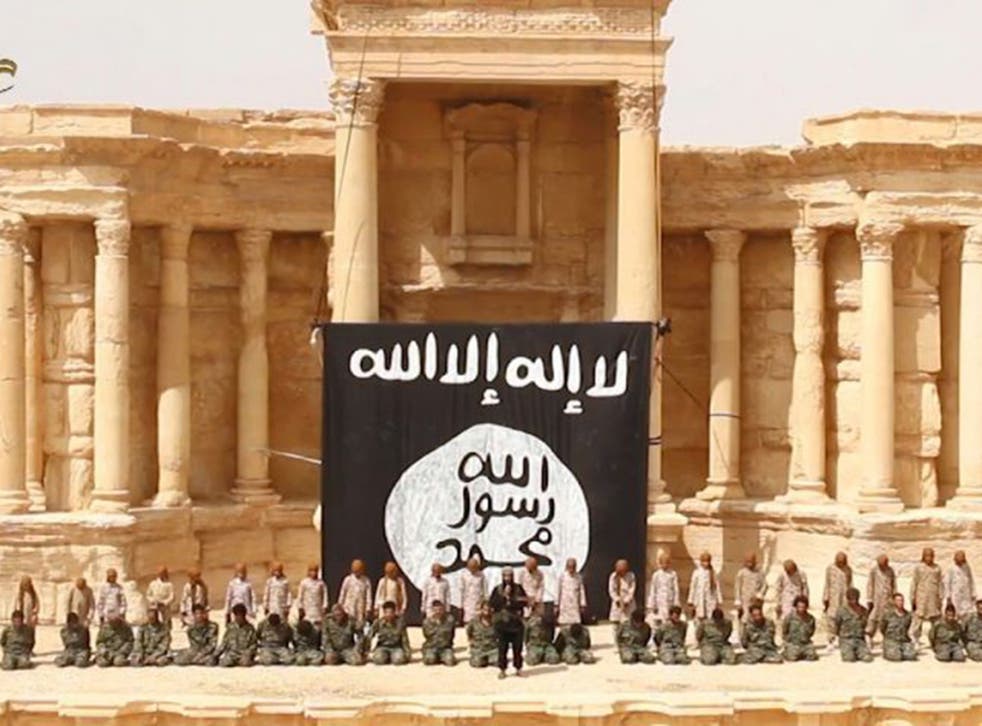
He wants a victory. Syria’s army, the only institution upon which the regime – indeed, the entire state apparatus – depends is being re-armed and trained for a serious military offensive against Isis, one which is meant to have enormous symbolic value both in the Middle East and in the world. Military plans always get delayed. And the moment the first artillery piece sends off a shell, the plans always go wrong. In Syria, operational details change every day and every night. But I’ll wager a well-informed guess right now – and we’ll keep calling this a guess, if only for form’s sake – that the Syrian army is being primed to recapture the ancient Roman city of Palmyra from the Islamists.
New Russian fighter-bombers, new anti-armour missiles, perhaps even the new T-90 Russian tanks are being prepared for the desert terrain. One of Syria’s most modern air force bases lies scarcely 50 miles from Palmyra – on the main road east to Homs – and the Syrian army has for months planned for an attack around the city. Only weeks ago, they postponed an offensive for fear that Isis would destroy the rest of the Roman city. But such concerns have now diminished. Isis has shown itself quite willing to destroy the Roman temples without a military assault on its forces.
Now a reminder. At this moment, I’m keeping to the “informed guess” that I mentioned above. The regime has to hold onto Aleppo lest it collapses into Isis hands and is immediately declared the Caliphate’s Syrian capital. The Syrian army has to keep open the road to Lebanon and the heights of Qalamoun along the Lebanese border. It cannot risk any more towns falling into Isis hands. But Palmyra is top of the list for the doubtful privilege of “liberation” from Isis.
The date would be within the next three weeks, but – since all Middle East battles slide off the time chart – we could probably run up to early November, before the rains begin sweeping across the sands from Iraq. Palmyra is a pearl to be recaptured because the world – with utter insensitivity, far more concerned about the fate of its imperial Roman ruins than its people – has registered the city’s loss to Isis last May as a major success for the “Caliphate”.
But for Putin, an offensive would – or will – be an epic symbol of Russia’s new projection into the Middle East. For Obama and Cameron and the rest of our Western leaders, who have fumbled around Syria for four years, neither dethroning Assad nor defeating Isis, a Russian-assisted recapture of Palmyra would be a humiliating lesson. Trusting in Moscow – and remember that Egyptian President al-Sissi was taking Putin to the Cairo opera only a few months ago – may look like a better bet for any Middle East leader than relying on Western support.
Politically, of course, a post-victory Palmyra will leave Assad much more secure in his half of Syria. Already the Americans and British are waffling about his “transitional” role in a future Syrian government – a “transition” which we all know could last for years. Putin is not pouring Russian treasure into the Syrian death pit to allow his man in Damascus to be overthrown. His Ukrainian president ran away. But Assad did not scarper off to Russia over these past four years. Nor has he remained in Damascus only to be pensioned off as a “transitional” president.
But what comes after Palmyra? The recapture of much of Aleppo – a far more risky project – or a return to Idlib city or even an attempt to seize the Isis “capital” of Raqqa? Relief, certainly, for the surrounded regime garrison in the desert city of Deir Ezzour. But a dark genie moves around the Syrian desert, awarding no prizes to the brave or the foolhardy. If Russia and Syria have made their plans, be sure that Isis have other operations up their sleeve; a strike into central Damascus, for example, as the rebels tried three years ago.
Nor will Russia be able to shake off the ghosts of Afghanistan in Syria. You cannot “capture” deserts. Nor can a new Russian air fleet defeat Isis on its own. At the very least, it must not tangle with Syria’s neighbours, which is almost certainly why Benjamin Netanyahu has just met Putin – to ensure that Israel does not misconstrue the meaning of Russian high altitude planes north-east of Golan. And the restoration of regime control – even over Palmyra – will lead to no broad sunlit uplands. Putin and Assad are not planning for any parliamentary democracies on the road to Damascus. But if Isis – along with its Putin-hating Chechen fighters – gets its wings clipped, then the US – and Nato – will have to negotiate with Moscow over the future of Syria. All of which, of course, will read like a curse to the hundreds of thousands of Syrian refugees bleeding away from their country on their great trek north through the Balkans.
spacer
spacer
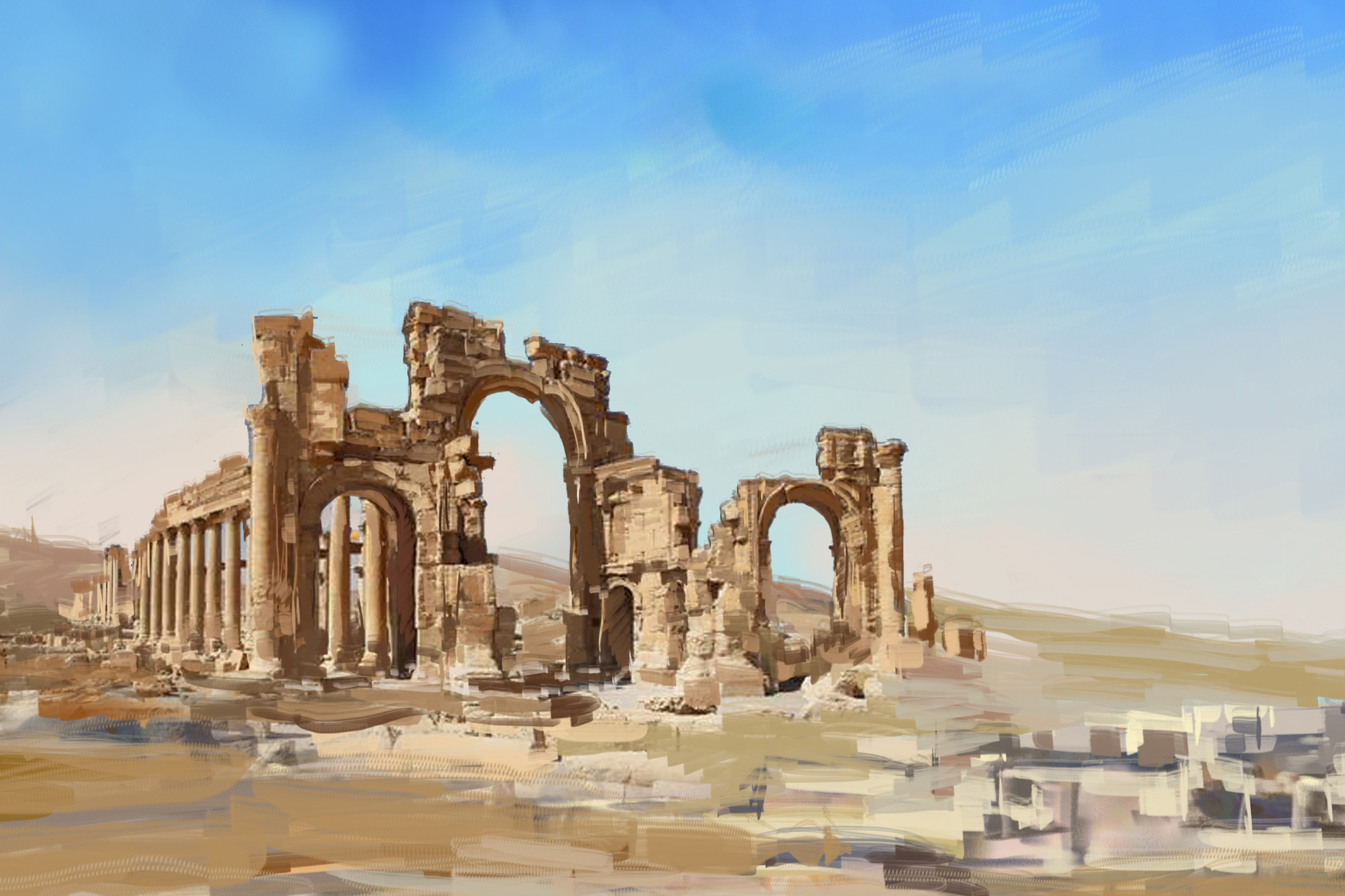
Drawing by Dmitry Divin
St Petersburg, the city where I was born and live, has a special and poetic nickname: since the reign of Catherine the Great in the second half of the 18th century, it has been referred to as the “Northern Palmyra”.
Indeed, the story of Zenobia, the powerful, determined and enlightened queen of the Parlmyrene Empire, was compared to Catherine’s own magnificent reign, and ancient Palmyra, which prided itself on its immense wealth and numerous architectural monuments, thus became a venerable sister of Russia’s imperial capital.
Russian scientists played a major role in studying Syria’s cultural and historical heritage.
Writer, explorer and princess, Lydia Pashkova, was one of the first people to describe Palmyra in her works. In 1882, Prince Semyon Abambek-Lazarev, another Russian traveler and Orientalist who took part in the excavations in Palmyra, discovered a marble slab dating back to 137 AD, inscribed with texts recording customs tariffs in two languages: Greek and Aramaic. The slab later played a major role in deciphering Aramaic and is currently part of the collection of St Petersburg’s State Hermitage museum.
In 1884, Abambek-Lazarev published his exquisitely executed book Palmyra on the results of the excavations, and a century later St Petersburg-based researcher and my senior colleague, Ilya Schifman released a study of the slab – also known as a stele – that included a translation of the inscription in Russian. Famous Russian art historian and archaeologist Boris Farmakovsky also made significant contributions to the exploration of Palmyra.
In 2001, I had the privilege to participate in organizing a major exhibition Moi, Zénobie, reine de Palmyre (I, Zenobia, queen of Palmyra), held in Paris. At a reception to mark its opening, I had a very interesting conversation with an elderly Syrian man, who impressed me with his extensive knowledge. It was not until later that I realized that he was none other than Doctor Khaled al-Asaad, director of the Palmyra museum complex. In August 2015, the eminent 81 year-old archaeologist was beheaded by members of Islamic extremist movement ISIS.
Now the terrorists have blown up Palmyra’s Arch of Triumph, its majestic temple of Bel (founded in 32 AD), the eclectic Greco-Roman-cum-Middle-Eastern style Temple of Baalshamin (131 AD) and three of the tower tombs in the Palmyrene Valley of Tombs, dating from 44 to 103 AD. They have also destroyed the ancient catholic monastery of Mar Elian, located between Palmyra and the town of Qaryatain, killing all the monks living there. The site of Dura Europos, an old border city built in 300 BC and inhabited until the 3rd century AD, was destroyed, as was Alamea, dating to the beginning of the 3rd century BC. The Citadel of Aleppo and the giant amphitheater of Bosra were completely demolished and Krak des Chevaliers, a stunning crusader castle, significantly damaged.
spacer
U.N. to Install 1000 Temples to Baal in U.S., China, Great …
 4/2016
4/2016spacer
Palmyra in ‘Better Shape’ Than Feared
GOOD NEWS

© Sana Sana / Reuters
spacer
Russia’s military on Thursday said it has completely demined the ancient site of Palmyra in Syria.
“As of today the tasks to demine the ancient architectural part of Palmyra have been completed in their entirety,” Yury Stavitsky, the commander of Russia’s military engineers, told President Vladimir Putin in a televised video link-up from Syria.
spacer

Russian army snipers work at the historic part of Palmyra, Syria in this photo released by Russian Ministry of Defense on April 9, 2016 – Sputnik International
Mitrofanova also said that the UNESCO would not finance the reconstruction works.
“Of course, it will be the international community: either a fund, or each country on bilateral basis will finance [the works],” she said, adding that there are some countries that have already expressed their willingness to take part in the reconstruction of Palmyra – for example, Poland, Bahrain, Austria, Greece, Russia, Italy as well as the European Union.
Daesh, outlawed in Russia, seized Palmyra in May 2015 and destroyed part of its historic ruins, which are a designated UNESCO World Heritage site. On March 27, forces loyal to Damascus and backed by the Russian Aerospace Forces, liberated the city.
Reconstruction of Palmyra Monuments to Take Up to Seven Years

Ancient Palmyra – Sputnik Internation
spacer
PALMYRA (Sputnik) – It will take from five to seven years to reconstruct monuments of the ancient Palmyra in Syria destroyed by Daesh terrorists, Russia’s Permanent Delegate to UNESCO Eleonora Mitrofanova told journalists Thursday.
“As for the time [needed for reconstruction of Palmyra], experts say it may take five-seven years,” Mitrofanova said.
Palmyra: A look inside the recaptured ancient city in Syria – BBC NEWS
She also said that start of reconstructing Palmyra is now discussed by experts.
“In principle, these issues are now discussed in depth. In particular, a special conference on the world heritage of Syria will take place in Berlin on June 2-3. But everything will depend on the conclusions drawn by the experts. Only after a detailed study it will be clear what to do with these objects: whether to renovate, to reconstruct [them] and so on,” Mitrofanova said.
spacer
Russia Stages Classical Concert in Recaptured Palmyra Amphitheater
Russian symphony, Famed Mariinsky orchestra, plays a surprise concert in Syria’s ruins of Palmyra, on the site where ISIS killed 25 people in 2015.
Syrian troops retook Palmyra from ISIS militants in late-March under the cover of Russian airstrikes and artillery.
Today, St. Petersburg’s Mariinsky Theater Orchestra performed on Palmyra’s 2,000-year-old Roman stage in a surreal scene among the desert ruins, which ISIS had used as an execution site. The orchestra played Bach and a symphony by Sergei Prokofiev to a crowd of Russian and Syrian soldiers and civilians, beneath a facade where the Roman Emperor Nero had once ordered a statue of himself placed.
| NERO – Perhaps the most infamous of Rome’s emperors, Nero Claudius Caesar (37-68 A.D.) ruled Rome from 54 A.D. until his death by suicide 14 years later. He is best known for his debaucheries, political murders, persecution of Christians and a passion for music that led to the probably apocryphal rumor that Nero “fiddled” while Rome burned during the great fire of 64 A.D. Several classical sources place Nero on the roof of his palace during the fire, dressed in stage garb and singing from the Greek epic “The Sack of Ilium.” Rumors quickly circulated that the emperor had started the fire. Whatever responsibility he actually bore for the disaster, Nero deflected attention by blaming members of the fledgling Christian religion for the fire. He ordered all manner of creative and brutal persecutions: Some were condemned to be dressed in animal skins and torn apart by dogs, while others were burned to death in nighttime pyres that provided light for the emperor’s garden parties.
His most lasting artistic legacy, though, was his re-creation of Rome following the fire that destroyed most of the city. Nero exhausted the Roman treasury rebuilding the city (out of the ashes after the fire, Rome rose like a Phoenix) around his 100-acre Domus Aurea (“Golden House”) palace complex. At its center he commissioned a 100-foot-tall bronze statue of himself, the Colossus Neronis. |
The face of Russia’s President Vladimir Putin appeared on a screen inside the amphitheater by video-link to address them. “Thank you for this surprising humanitarian action,” Putin told the crowd.
The concert, titled “A Prayer for Palmyra,” was broadcast live by Russian state television. The concert’s conductor, Valery Gergiev, told the audience the concert was protesting “against barbarians who have destroyed monuments of world culture.”
Palmyra is a UNESCO World Heritage site, the sprawling well-preserved remains of an ancient city that was once Syria’s most popular tourist attraction. ISIS forces seized the city last May and began dynamiting some of its architectural sites that the terror group believes were idolatrous, causing extensive damage.
After Palmyra was retaken, the Russian military de-mined the ruins, removing thousands of ISIS booby traps, according to the country’s defense ministry.
Moscow and the Syrian government have trumpeted Palmyra’s recapture as a symbol of how their campaign is rescuing civilization in Syria after five years of savage warfare. Today’s concert seemed intended to underscore that idea.
Putin said the concert was meant as as sign of hope “for the deliverance of modern civilization from this terrible plague, from international terrorism.”
But even as the Russian orchestra played, fighting continued across Syria, with reports that an airstrike had struck a refugee camp, killing dozens. Meanwhile, Syrian President Bashar al-Assad pledged that his forces would eventually achieve victory over rebels in Aleppo, despite a 48-hour truce brokered by the United States there Wednesday. The comments suggested Assad had little intention of engaging seriously in peace negotiations with rebels that had all but collapsed last month.
Monitoring groups estimate over 400,000 people have been killed in Syria since 2011, the great majority by forces loyal to Assad, many through indiscriminate barrel bombing and airstrikes. Leaked documents acquired by international rights groups have shown tens of thousands have been brutally tortured by Assad’s security services, beaten, suffocated, electrocuted, some with limbs drilled, their eyes gouged out.
Russia has been supporting Assad’s government with a ferocious air campaign targeting rebels, as well as with advisers on the ground. Russian aircraft in Syria have been accused by rights groups of indiscriminately bombing hospitals in rebel areas and causing hundreds of civilian casualties. Rebel groups last week blamed Russia for airstrikes on a hospital in Aleppo that killed at least 27 people.
Although Aleppo was quieter today, rebels reported shelling in villages near the city, according to The Associated Press. ISIS fighters, meanwhile, seized gas fields in the desert near Palmyra, the first advances by the group there since the city was retaken, Reuters reported.
Staging musical concerts on the sites of its military successes is becoming a signature move for the Kremlin. Valery Gergiev, the conductor at Palmyra known for his outspoken support of Putin, also led the orchestra when it played in the breakaway republic of South Ossetia after Russian troops routed Georgian troops in a 2008 war there.
Popular Russian singers have also held concerts in Crimea and eastern Ukraine after pro-Russian rule was established there.spacer
spacer
Russia sees the desert city as a symbol of its strength and influence in new Middle East

Syrians take a selfie ahead of a music concert in the ancient theatre of ravaged Palmyra on May 6, 2016.
Beirut: Two months after Syrian regime forces ousted Daesh from the ancient city of Palmyra in the Syrian desert, several countries have offered to help rebuild the world heritage site destroyed at the hands of the terrorists.
The list includes Peru, Bahrain, Austria, Greece, Italy, and Russia, whose army played a crucial role in the liberation of the city last March.
A French company specialised in digitisation of vulnerable archaeological sites has already visited the city to assess the damage. There is no final figure as to how much rebuilding Palmyra would cost or how long it would take, with estimations ranging anywhere between three-ten years.
Moscow will probably be awarded the honour of rebuilding the Arch of Triumph, a magnificent monument dynamited by Daesh last October, once linking the main street of the Colonnade and the Roman Temple of Bel.
It was to the people of Syria what its namesake was to the people of Paris; a tourist attraction and source of pride.
Russia, which staged a major concert in Palmyra on May 6, sees the desert city as a symbol of its strength and influence in the new Middle East.
Other destroyed parts of Palmyra will probably be handled by Russia’s allies.
Two Polish experts from the University of Warsaw have already arrived in Palmyra, having first visited the city back in 2005 to restore its famous 15-tonne lion statue, called Lion of Al Lat, located at the city museum’s main entrance. The statue of a pre-Islamic Palmyra goddess, dates back to the 1st century and was destroyed by Daesh last June.
The Polish archaeologists returned to Palmyra, at the invitation of the state-run Directorate of Antiquities, to find the statue smashed into pieces, scattered all over the city.
They were collected in tiny pieces and large stone slabs, inventoried, boxed, and shipped to Damascus for restoration. They wrote that the statue could be restored to its previous shape, but the most difficult parts to piece back would be around its nostrils. (That is probably why those who want to deface idols break off their noses. Isn’t that interesting as the nose is where one breathes and breath is life. Very symbolic.)
Five major sites were destroyed in Palmyra by Daesh during their 10-month rule of the ancient Syrian city.
They are the temples of Bel and Baalshamin, the Arch of triumph, the Valley of Tombs, and the Palmyra Museum.
According to the Directorate of Antiquities, the two temples are “not beyond repair” as most of their fragments are still scattered around the war-torn city; they can still be found and pieced together.
It would take anywhere between three to five years to restore them, he added.
The same cannot be said of the city’s museum, which was destroyed by mortars, smashed, and looted by Daesh.
It currently lies beneath a pile of garbage and debris. Most of the 200 objects on display at the museum’s ground floor have been completely destroyed, apparently with hard tools and sledge hammers.
Many of the statues were decapitated and their hands were chopped off. Major damage was also found at the Fakhr Al Din Al Maani Castle, a Mamluk-era fortress located on a hill overlooking the city. The castle, labelled a World Heritage Site by Unesco, was used by Daesh fighters, thanks to its fortification and high walls, to fight off government troops last March, and it was heavily damaged by the fighting. The staircase leading to its entrance has collapsed, and so has its eastern tower. Ironically only the famous Roman amphitheatre remained untouched by Daesh. At the orders of its self-proclaimed “caliph” Abu Bakr Al Baghdadi, Daesh executed no less than 280 civilians — mainly residents of Palmyra who refused to leave — at the very same theatre and filmed the grotesque scenes to send shivers down the spine of Palmyra. Leaflets and papers with the black & white logo of the so-called ‘Islamic State’ (Daesh) could still be found in between the ruins and in the now abandoned government agencies of Palmyra.
Despite the horror of what happened to Palmyra, only 20 per cent of the city’s archaeological architecture was destroyed by Daesh, according to the Syrian Directorate of Antiquities.
Before the full restoration starts, however, the Syrian Government has to demine the city and restore water and electricity. Russian experts are already working round the clock removing explosives scattered by Daesh in the residential parts of Palmyra, while government troops are protecting the city’s outskirts, fearing a surprise attack by Daesh, which still controls the fields in Palmyra’s countryside and the nearby town of Al Sukhneh.
On May 5, the St Petersburg Mariinsky Theatre Orchestra performed at the Palmyra Theatre, led by world-acclaimed conductor Valery Gergiev. President Vladimir Putin took centre stage via satellite, addressing the crowd from Kremlin and thanking his troops for helping liberate Palmyra.
On the next day marking Syria’s 100th Martyr’s Day Anniversary, an assortment of musicians and singers took the stage in Palmyra, performing a live concert attended by Syrian and Russian officials.
spacer
OPINION:
Site is near Islamic State (ISIS), ancient-archeologocial site
The American School of Oriental Research’s Cultural Heritage Initiative posted pictures from the satellite imagery and analytics company DigitalGlobe that show the construction on the edge of the ancient site, reports the Associated Press.
Maamoun Abdulkarim, head of the Antiquities and Museums Department in Damascus said his organization was not asked for permission but added that ISIS is close to the town and the presence of Russian and Syrian troops is important to ensure that the site remains in government hands. “We refuse to give permission even if it was for a small room to be built inside the site whether it is for the Syrian army, Russian army or anyone else,” Abudlkarim said by telephone from Damascus. “We will never give such permission because this will be in violation of the archaeology law. During the time of war, sometimes archaeological authorities don’t have a say but security decisions dictate the orders,” AbdulKarim said. “Once the situation improves and peace is reached, then we will openly call for removing” the barracks.
Russia has stated that it is withdrawing forces from the Syrian theater and returning them to Russia. However, in reality, the Russian armed force have simply rotated different kinds of equipment between Syria and the Russian homeland for a different type of fight against the Islamic State. A new facility in Palmyra is proof that the Russian military is staying put and the new axis of Russia, Iran, and Syria in the Middle East is alive and well.
spacer
Bach in Palmyra: Russia’s Surprise Concert in the Ancient Syrian City
MAY 20, 2016
The surprise concert by Russia’s greatest orchestra from the Mariinsky Theater of St. Petersburg that took place two weeks ago in the Roman amphitheater in Palmyra, Syria was staged as a grand gesture proclaiming an important symbolic victory of civilization over what the ensemble’s conductor Valery Gergiev called “the barbarians.” Rather than blowing the stunning venue to smithereens as they had other antiquities in the ancient city, ISIL had also used the amphitheater for its own symbolic purposes—the ghastly mass executions of captured Syrian soldiers.
But as musicians should know better than anyone, symbols are difficult, even impossible things to keep under control. They have a way of revolting against their would-be masters. Nowhere is this more apparent than in art and performance. There is nothing more uplifting than music—or more destabilizing. Even the notes and signs on the page have a way of breaking free and making their own meanings, ones often unintended by the composer.
The niches, pediments and columns of the sumptuous backdrop from the second century were meant by the Russians to project a vision of ordered beauty and “Western” values yet could just as easily have summoned images of Romans feeding Christians to the lions back in the Coliseum.
Likewise, the musicians’ black uniforms presented an austere, almost malevolent sight, conjuring thoughts of the darkly clad ISIL fanatics who had until recently run the show in Palmyra. Such is the power of tradition: a symphony orchestra wears black unless its members don their white jackets for pop concerts. The “Prayer for Palmyra” was not a pop concert. The Mariinsky musicians looked like special forces sent for a commando cultural strike in the Syrian desert, wielding their instruments as weapons, Gergiev marked as there commander by the white baseball cap that was a vital shield from the scorching sun.
Only a detail from the full Mariinsky corps was dispatched to Palmyra for this action. It was a contingent just large enough to conclude the concert with Prokofiev’s Classical Symphony, a piece chosen, as Gergiev also pointedly noted, to demonstrate a respect for history that differentiates the anti-terrorists from the terrorists. Thus the classical architecture mirrored the Russian composer’s classical homage. In fact, both place and piece are neo-classical: the amphitheater is largely reconstructed from the ruins, just as the Prokofiev symphony, one of his most popular pieces, is itself a kind of historical reconstruction enlivened by fantasy. Many of the musicians of this elite corps of the orchestra looked understandably beleaguered by the heat and also nervous about playing in a war zone. They were hardly braced by the sprightly humor evanescing from Prokofiev’s flirty retrospect.
Seen in the historical terms Gergiev so frequently invoked, these comparisons between orchestral forces and military units are not merely figurative. The rise of the orchestra as a central European institution in the seventeenth century coincided, indeed was inextricably linked to, the formation of autocratic regimes across the continent. For the first time since the Roman Empire, states gathered massive standing armies while simultaneously establishing orchestras: the machinery of a music and military were both vital weapons in a ruler’s arsenal. Louis XIV’s band—the king’s twenty-four violins (Les Vingt-quatre Violons du Roi) —was famed for its discipline. The German rulers he and his successors formed alliances with and fought against emulated the Sun King in dress, language, manners and cultural refinements. Monarchs such as August the Strong in Dresden and Frederick the Great in Berlin built their own world-class armies and orchestras on parallel structures of command and obedience.
When the English traveler Charles Burney, himself a sometime orchestral musician who had fought under the stern musical command of Thomas Arne (composer of “Rule Britannia”) and Handel (an unparalleled master of musical saber-rattling and author of one of the greatest hits of the British Army, the March in Scipio) arrived in Mannheim in the summer of 1772 while on his tour of the German states, he remarked to his published diary: “The first thing I heard was military music.” When he attended a performance by the music- and military-loving Elector Palatine’s orchestra a few days later at his residence in Schwetzingen, Burney famously described the ensemble as “an army of generals, equally fit to plan a battle, as to fight it.”
It is no coincidence that the age of the orchestra that continues to do this day has been a period both of symphonic masterpieces and nearly uninterrupted war—one of cataclysm not concord. In spite of Gergiev’s assertion that the Mariinsky concert should encourage “peace and unity,” the institution of the orchestra has over its three-and-half-centuries of existence been as much a force for division and hostility as it has been for brotherly—and more recently, sisterly—love. However much his rhetoric appeals to transcendent values, Gergiev himself is a musico-military asset; in 2014 he joined other cultural figures in signing an open letter in support of Russian annexation of the Ukraine. Leading the Palmyra cultural campaign similarly demonstrates support for Russian airstrikes in Syria.
It was necessary to the rituals of triumph that Vladimir Putin be beamed in from Moscow onto a screen stage-left behind the orchestra. He wore a dark suit and tie, the modern dress of statecraft, but I was sorry he missed the opportunity for something more theatrical like the purple mantle of a Roman Emperor and a laurel crown. The Russian President spoke of a “common” victory and of the larger project of “our entire civilization to ride itself from this terrible evil of international terrorism.” But there was no mistaking that while the speeches embraced humanity, the music struck a mighty blow for Mother Russia. The musicians, the repertoire, and the military advisers flanking the orchestra were all Russian.
The exception to this hegemony was the opening number: J. S. Bach’s Chaconne from the Partita no. 2 in D minor for solo violin, a work Gergiev said “symbolizes the greatness of the human spirit.” Bach is often drafted into service as the composer whose music transcends all difference. His works are quite literally universal: pieces by Bach make up three of the twenty-five tracks transcribed on the Voyager spacecraft’s Golden LP launched from Cape Canaveral in 1977 and since 2012 hurtling through interstellar space.
Bach even gets the disc’s opening tune—the first movement of the second Brandenburg Concerto. Yet this work, too, pulls us inexorably back towards the black hole of European militarism. The dedicatee, the Margrave of Brandenburg, was a leading Prussian general. Not surprisingly the swashbuckling trumpet of Bach’s concerto recalls the prince’s two greatest loves: battle and the hunt. As for Bach himself, he could hardly have been ecumenically minded, and was in any case an ardent monarchist. He also led the choristers in his charge in musical performances at Leipzig’s ghastly public executions, as was pointed out and reflected on by Bach scholar Peter Williams, memorialized in this space two weeks ago. Performing Bach’s music in Palmyra can bring with it unwanted associations for the of civilization.
|

Still, the solo violin might well be seen to embody an independence and freedom opposed to the martial order imposed by the orchestra. Yet even Bach’s profound Chaconne can, especially when heard in the glorious amphitheater recently reclaimed from the infidels, become a work of aggression: for all its striving, its brilliance, its ingenuity, and its pathos, the piece can be treated as heroic stuff, even as a kind of battle. Accordingly, one of the masterminds of the musical intervention, culture minister Vladimir Medinsky, proclaimed “it is the destiny of the Russian soldier at all times to save culture from fascist destruction.” For a valiant violin recruit, the Chaconne becomes a test of bravery in sound.
It’s an especially a harrowing mission to attempt in a desert climate before the world’s cameras. Also seeking solar protection under a baseball cap like Gergiev’s (the good guys may wear black shirts, but they do have white hats), thirty-three-year old Pavel Milyukov took center of the stage. Milyukov won third prize at last year’s Tchaikovsky International Competition—in Moscow of course. He proceeded to pound the Chaconne into submission, never relaxing the beat of his assault, his massive sound and strangling vibrato ringing out over the colonnades, captured in stirring panoramic shots for the television audience. No mercy was shown to the solo violin masterpiece just as none will be shown to the forces of Islamic evil.
From Bach to Prokofiev it was a signal victory for Russia’s rapidly deployed military-musical prowess. You can be sure this audacious action has jolted the Pentagon’s cultural colonels from their shameful complacency. Here’s betting blueprints for the covert operation Copland in the Caves of Kandahar are now being drawn up. If only the U. S. military had been ready to intervene with Appalachian Spring when the Arab Spring broke out, then maybe the Joint Chiefs would not have had to endure the recent humiliation of the Russians taking Palmyra by musical storm. (Ya, in full support of the reigning tyrant who is merciless, violent and rules by fear and torture.)
spacer
If that were to happen, many historians would view the monuments as mere replicas, shorn of the ancient heritage of the original structures.
Experts from Russia’s Culture Ministry have assessed the damage in Palmyra after the UNESCO world heritage site was recaptured from Islamic State in March.

One of the symbols of Palmyra, the Greco-Roman Temple of Bel, founded in the first century, “can be hardly restored”, the Russian experts said in a report presented on Thursday.
“A recreation of the monument can only be made by its reconstruction using designs and photographs after preliminary clearing of the building’s ground,” the report said.
This will require at least 3-4 years and “significant financing”, the experts added, estimating that the rebuilding of another key monument, the Arch of Triumph, would be possible within 9-12 months.
“After the re-creation of the monument it will 60-70 percent consist of new materials,” the report said about the arch, whose vaults it said were “fully destroyed” by an explosion.
Some original fragments of the nearly 2,000-year-old Temple of Baalshamin could be restored in 2-3 months, they said.
A decision on which works will be rebuilt has not been made yet, Russian Deputy Culture Minister Vladimir Aristarkhov told a news conference also attended by the Syrian ambassador to Moscow.
Aristarkhov called on other countries, including ones in the West opposed to President Bashar al-Assad, to take part in discussions on the restoring the ruins in Palmyra, including how such work would be funded.
Hmmm, I don’t know about you, but I have the distinct feeling that all this was staged so that UNESCO could recruit the financial aid of all nations to rebuild the City of Palmyra and the Pagan worship for which it is known.
Editing by Alexander Winning and Robin Pomeroy
Our Standards: The Thomson Reuters Trust Principles.
spacer
The theater was constructed in the center of a semicircular colonnaded piazza which opens up to the South Gate of Palmyra. The piazza was situated to the southwest of the main colonnaded street. The uncompleted cavea is 92 meters in diameter and contains only an ima cavea, the lowest section of the cavea, directly surrounding the orchestra. The ima cavea is organized into eleven cunei of twelve rows each and faces north-northeast towards the cardo maximus.
The theater’s aditus maximus, its main entrance, is 3.5 meters in width and leads to a stone-paved orchestra with a diameter of 23.5 meters. The orchestra is bounded by a circular wall with a diameter of 20.3 meters. The proscenium wall is decorated with ten curved and nine rectangular niches placed alternately. The stage measures 45.5 by 10.5 meters and is accessed by two staircases.
The scaenae frons had five doors and the main entrance, or regia, built-in broad curved niche; two guest doors on either side of the regia, or hospitalis, constructed in a shallow rectangular niche; and 2 extra doors on either end of the stage.
Emperor Nero was famous to have placed his statue in the niche of the regia of the Theater of Palmyra. The columns at the stage are built in the Corinthian order. In the 1950s, the theater was cleared from the sand and subsequently underwent extensive restoration works in the early 1990s.
They appear to be quite proud of their association with NERO. That should scare most people.
Read More – Magnificent 104Ft DeSoto Falls of Mentone Alabama
spacer


Source: Wikipedia

 |
 |
ISIS Recaptures Ancient Syrian City of Palmyra
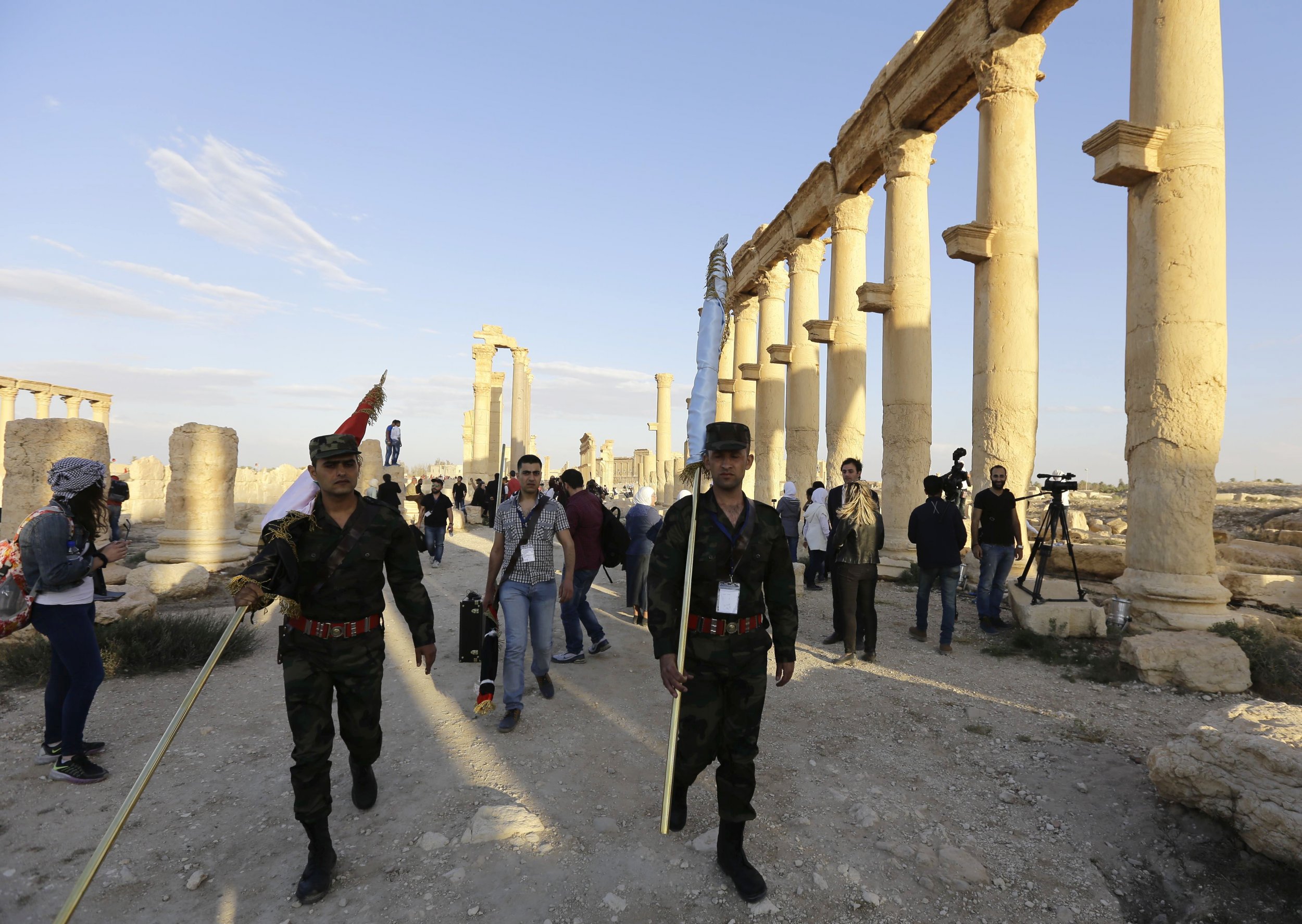
The extremist group had fought its way back into the city Saturday before the Russian bombardment Sunday.
Talal Barazi, the governor of the Syrian city of Homs, confirmed the ISIS capture of Palmyra, saying that Syrian government forces are on the outskirts of the city in preparation of a new offensive to liberate the city, the BBC reported.
He said “the army is using all means to prevent the terrorists from staying.”
The group seized the ancient city in May 2015 from the forces of Syrian President Bashar al-Assad. The Syrian army recaptured the city in March with the support of the Russian air force.
ISIS’s recapture of the city raises questions about the Syrian military’s ability to hold the territory that it is clawing back from rebel and extremist groups with the help of Iran and Russia.
After it seized Palmyra in 2015, ISIS proceeded to blow up ancient temples and desecrate thousands of years of history at the UNESCO World Heritage site, sparking international condemnation.
Images released to Newsweek earlier this year by the Directorate of Syrian Antiquities showed the destruction of several of Palmyra’s famous Roman structures, such as the Temple of Bel, the Baalshamin Temple and the Arch of Triumph, but also that some of the city’s most important archaeological structures had remained untouched. ISIS’s recapture of the city will again raise fears that the surviving archaeological wonders in Palmyra could be destroyed by the group that views any structures that pre-date the Islamic faith as idolatrous
spacer
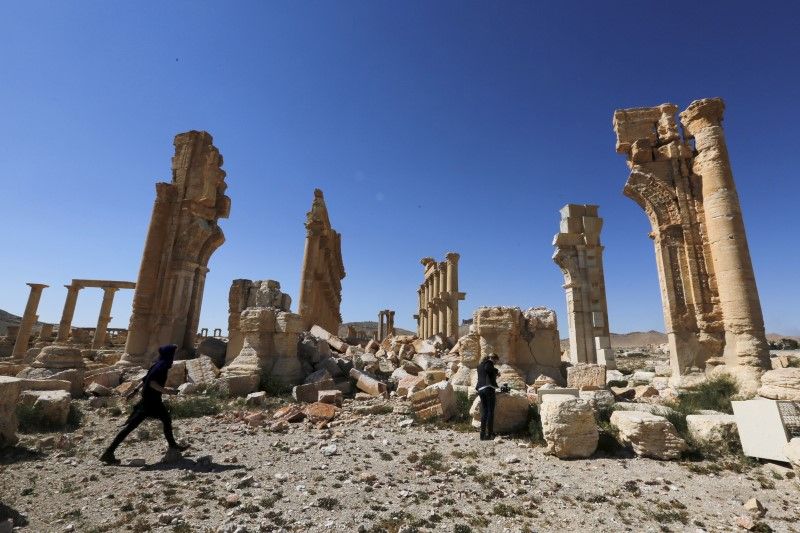
The ancient city of Palmyra was held by the Islamic State militant group (ISIS) until the spring of this year when Assad’s military, supported by Russian forces, took control of the city. Although hailed as a major success at the time, because of the city’s historic status, Russian and Syrian government forces lost control of central Palmyra on Sunday.
ISIS online outlets have circulated a video purporting to be the capture of an abandoned Russian base in Palmyra, though it has not been officially verified.
Speaking to journalists during his visit to Japan, Putin claimed the lack of coordination between the West and the Assad regime was to blame for the loss of Palmyra, according to Russian state news agency Itar-Tass. U.S.-allied leaders have refused to support Russia and Assad’s operations in Syria, saying they cannot support Assad’s brutal crackdown on rebels and civilians. So far, the Syrian civil war has claimed more than 450,000 lives. (That is as it should be. We should never support TYRANTS!)
“Everything that is happening in Palmyra is the result of the uncoordinated actions between the so-called international coalition with the Syrian authorities and Russia,” he said. “I have said many times that in order for the fight with terrorism to be effective we must unite our efforts.” (The problem is both sides of this war are terrorist!)
Putin did not elaborate on his statement but it echoed the claims made on Tuesday by Russian Defence Ministry spokesman Igor Konashenkov. He accused the West of stopping military activity against ISIS near Raqqa, thereby allowing the advance on Palmyra.
Although Putin’s spokesman Dmitry Peskov said the loss of Palmyra was a “loss for the entire civilized world” earlier this week, Putin said on Friday that control of the city was “purely symbolic.”
“When it comes to military and political significance, in this sense Aleppo is a much more important topic,” Putin said, referring to the recent triumph for Assad’s forces in the city. Putin also said that he had recently spoken to Turkish President Recep Tayyip Erdogan and invited him to begin peace talks with the Syrian government and opposition in Kazakhstan.
 Two famous ancient structures in the city of Palmyra have been destroyed by ISIS forces, Syria’s antiquities chief says.
Two famous ancient structures in the city of Palmyra have been destroyed by ISIS forces, Syria’s antiquities chief says.
The Tetrapylon and the facade of the city’s Roman theater have both been almost completely demolished, the official says, according to NPR’s Alison Meuse.
“Activist Khaled al-Homsi, who is from Palmyra, shared satellite imagery to Twitter, which appears to confirm the scale of the damage,” Alison reports. “The face of the Roman theater is a pile of rubble and only four of the Tetrapylon’s 16 columns appear to be standing.”
Alison notes that this is the second time over the course of Syria’s six-year civil war that the Islamic State has seized control of Palmyra. ISIS first captured the ancient desert city in 2015. The extremist group held it for more than a year before the Syrian government seized it back — and then lost it again last month.
The first time ISIS claimed Palmyra, they reportedly slaughtered men, women and children in the streets. They beheaded the 81-year-old scholar who was the director of antiquities in the city. And they devastated the UNESCO World Heritage Site’s antiquities and monuments, unleashing what NPR’s Frank Langfitt called, “an orgy of demolition.”
“Using dynamite, fire, bulldozers and pickaxes, the wrecking crew targeted 2,000-year-old Greco-Roman temples, monuments and stone statues,” Frank wrote last year.
ISIS often claims it destroys ancient sites because it considers the pre-Islamic art works heretical. But the group reportedly loots antiquities for profit, and as Washington Post reporter Liz Sly told Morning Edition in 2015, ISIS gets “masses of publicity every time they blow up or destroy something that is valued by the world.”
When government troops recaptured Palmyra in 2016, they discovered the extent of the damage. The famed Temple of Bel was blown to pieces. The Temple of Baalshamin was destroyed. Artifacts in the museum were smashed. The iconic Arch of Triumph was in ruins.
After the last ISIS occupation of Palmyra, NPR’s Kevin Beesley noted that while the damage to the city’s historical sites was massive, “some of the major structures remain.”
For instance, he said, the ancient Roman theater was still standing — but now that, too, has been destroyed.
9(MDEwODYxNTQyMDEzNjAxODk2Nzc2NzNmYQ001))
Photos show the size of the damage to the Roman theater and the Tetrapylon in #Palmyra.
destroyed by criminals #ISIS pic.twitter.com/76kfVEGk15— Khaled AL Homsi (@PalmyraPioneer) January 20, 2017
spacer
Tetrapylon A tetrapylon (Greek: τετράπυλον, “four gates”), plural tetrapyla, known in Latin as a quadrifrons (literally “four fronts”) is a type of ancient Roman monument of cubic shape, with a gate on each of the four sides, generally built on a crossroads. How to pronounce tetrapylon? David Wikipedia
You had better believe that this is a very powerful spiritual symbol. I don’t fully understand it yet. But, I am studying it and will write more on it later. But the PILLARS have huge spiritual significance and the FOUR GATES most certainly do. THE NORTH, THE SOUTH, THE EAST AND THE WEST… much more powerful than we understand. The pillars on which the EARTH STANDS is a much more important truth than we realize. Crossroads are another very significant spiritual truth. By the way, have you ever pondered how there can be an east and a west on a spinning ball?? You can tell by all the following articles that there is real significance to the Four Gates. In every spiritual discipline.
|
The Zohar explains: You are a city. You are the master of four gates that enter your city: the Gate of Vision, the Gate of Listening, the Gate of Imagining and the Gate of Speaking. The husband is the Infinite G‑d, and although He is infinite, He can be known to each of us if we will only clear the gateways for Him to enter.
|
|
Before you do, I think Sid would recommend you reflect on the various aspects that the historical Buddha laid out in terms of using your speech as a helpful tool — a tool of mindfulness and compassion. These are commonly known as the Four Gates of Speech: 1. Is what you are saying true? This is more than just not lying to your ex.
|
|
The four gates are four questions we can ask ourselves before we speak, or post something on social media, or respond to an email. You may have heard them before as the three gates, or the three sieves. As a parent of two teenagers, I know they’re used often to help teens think through the way they interact with each other.
|
|
The Four Gates, derived from a spontaneous talk given by Dr. Vogel at the Nataraja Yoga Ashram in 1986, includes detailed points of knowledge that guide you on the path to fulfillment by living according to your true identity and thereby freeing yourself from the self-imposed limitations that curtail human lives. Read more Print length 330 pages
|
|
The Four Principal Gates of Hell by St. Alphonsus Liguori “Defixae sunt in terra portae ejus. ” “Her gates are sunk into the ground.”-Lam. ii. 9. B road is the way that leadeth to destruction, and many there are who go in thereat (Matth. VII. 13)? Hell has then different gates, but these gates stand on our earth. Her gates are sunk into the ground.
|
|
Here is a favorite of mine: The 4 gates are comprise of two acupuncture points needled bilaterally: one on the hand and one on the foot. This is a very common combination of points, believed to redistribute energy and help recirculate stagnant flow.
|
|
It is the belief that human beings are tied to all things in nature. It is this belief which assigned virtues to the four cardinal directions; East, South, West and North. Blessing to the Four Directions 1 In times past it was believed that the human soul shared characteristics with all things divine.
|
|
The four winds are a group of mythical figures in Mesopotamian mythology whose names and functions correspond to four cardinal directions of wind.
|
|
Up to the present day north is viewed as a place of cold and darkness. Additionally, in the first few centuries of the Church the barbarian armies lived to the north of Christian cities and were …
|
|
Isaiah 43:6 King James Version 6 I will say to the north, Give up; and to the south, Keep not back: bring my sons from far, and my daughters from the ends of the earth; Read full chapter Isaiah 43:6 in all English translations Isaiah 42 Isaiah 44 King James Version (KJV) Public Domain PLUS Do you have questions about the passage you are reading?
|
A tetrapylon (Greek: Τετράπυλον, “four gates”) or “quadrifrons” (Latin …
794px-Palmyra_Tetrapylon,_Syria
 |
Tetrakionion
A tetrakionion (τετρακιόνιον), plural tetrakionia, is a type of tetrapylon in which the central crossing is not roofed, and the four corner-markers exist as four separate structures (i.e.: unconnected overhead). Perhaps the most striking construction at Palmyra in Syria, the Tetrapylon marked the second pivot in the route of the colonnaded street. It consisted of a square platform bearing at each corner a tight grouping of four columns. Each of the four groups of pillars supported 150,000kg of solid cornice. It was badly vandalized in 2017. |
spacer
spacer
The Great Colonnade at Palmyra was the main colonnaded avenue in the ancient city of Palmyra in the Syrian Desert. The colonnade was built in several stages during the second and third century CE and stretched for more than a kilometer (approximately .75 miles). It linked the Temple of Bel, in the southeastern end of the city, to the West Gate and the Funerary Temple in the northwestern part.
The colonnade was damaged during the Syrian Civil War, especially when Palmyra was occupied by the Islamic State of Iraq and the Levant from May 2015 to March 2016. However, large parts of it are still intact
Overview
The colonnade consists of three sections that were built separately over the course of the second and third century CE. The western stretch of the colonnade is the oldest and started at the West Gate near the Funerary Temple.[1] The eastern section stretched from the Monumental Arch in the center of the town to the entrance of the Temple of Bel.[2] The middle section was built last to connect the two separate colonnades. It met the western stretch at the Great Tetrapylon, and the eastern stretch at the Monumental Arch.[3]
Western section
The western colonnade was the first section to be built. Inscriptions found on some columns confirm that works started before 158 CE.[1] The straight avenue ran in northwest-southeast direction and stretched for 500 metres (1,600 ft), the longest of the three sectors.[4] The main avenue’s width was 11.7 metres (38 ft) while the side streets were 7 metres (23 ft) in width.[5] The colonnade’s western terminus, the West Gate, was built in the late second-century CE. The avenue also connected in a right angle to the Transverse Colonnade[3] which stretched to the Damascus Gate in the south.[6]
Eastern section
The eastern sector of the Great Colonnade started at the Monumental Arch and stretched in a northwest-southeast direction towards the propylaea of the Temple of Bel. Work on the colonnade started after the completion of the propylaea in 175 CE and continued through the beginning of the third-century CE.[2] This section is the widest of the Great Colonnade with a uniform width of 22.7 metres (74 ft) for the main street and 6.7 metres (22 ft) for the sidewalks.[5] A corner of the temenos of the Temple of Nebu was demolished to allow the colonnade an uninterrupted line of sight towards the Monumental Arch from the west and a wider access to the section leading to the Temple of Bel. A nymphaeum was later added to the eastern colonnade between the Bel and Nebu temples.[2]
Middle section
The Great Colonnade and the Monumental Arch.
The middle colonnade, stretching from east to west, was constructed to connect the two earlier colonnades. (serving as a BRIDGE) Work on the central avenue began from the Monumental Arch, where it met the eastern colonnade, sometime in the early third-century CE. The section stretched until the Great Tetrapylon where it met the western colonnade in an oval plaza. The central colonnade also incorporated the portico of the baths. The central section of the Great Colonnade became the most important with several civic buildings clustered around it, including the caesareum, the theatre, the baths and the Temple of Nebu.[3] The width of the main street varies from 14 metres (46 ft) at its widest near the tetrapylon, to 10 metres (33 ft) when it reaches the Monumental Arch. The sidewalks also vary in width between 6.3–7 metres (21–23 ft) for the northern sidewalk and 6.8–8.95 metres (22.3–29.4 ft) for the southern one.[5]
Architecture and significance
The colonnade’s early columns, especially in the western stretch, were built using the classical opus emplectum building technique. The columns consisted of six to eight short sections.[1] This technique was gradually replaced, from the 220s, by what historian Marek Barański termed opus Palmyrenum.[5] The newer technique, seen in the middle and eastern stretches of the colonnade, utilized three long segments instead of the short drums.[1] The technique allowed for significantly faster construction at the time.[5]
The Corinthian columns were fitted with decorated brackets that bore dedicatory inscriptions.[7] The brackets were used to hold bronze statues of important figures.[4] Dedicatory inscriptions to Zenobia and Odaenathus dating to between 257 and 267 were discovered on columns set up in front of the theatre.[3]
ISIS is closing in the ancient city of Palmyra in Syria, whose destruction would be a “human catastrophe” if the terrorists are not kept at bay.
Just as critical, ISIS’ advancement toward the UNESCO World Heritage Site threatens the lives of 100,000 people in and around Palmyra, including 35,000 Syrians displaced by the ongoing violence in their embattled country, AFP reported.
The Syrian government is trying to drive back ISIS fighters from the site, BBC News reported, but are reportedly less than a mile from the city. Syrian warplanes and troops are targeting them along the city’s eastern side.
Soldiers and pro-government militiaman have already been killed in the fighting since the offensive began Tuesday; the tally now stands at 73 soldiers. In villages near Palmyra, which have already been captured, 26 civilians have been executed for collaborating with the government –– 10 of them beheaded, AFP added.
The people who live there are fleeing from the neighborhoods in the north, an antiques shop owner there named Mohammed told the New York Times.
“People are scared, staying home, we’re hearing loud noises outside but we don’t know what’s happening.”
But why is ISIS targeting Palmyra in the first place?
Capturing it would give the Islamic State a strategic advantage — Palmyra lies between Syria’s capital Damascus and a highly-contested city on Deir al-Zour in the east. It’s also close to gas fields and has a major air base, BBC News explained.
But ISIS’ hatred for ancient sites goes beyond the practical into the dogmatic and extremist. Syria’s antiquities chief, Maamoun Abdulkarim, called it a “battle between civilization and barbarism,” the Independent reported.
“It will be a human catastrophe. If (they) enter the city it will mean destroying the temples, ruins and tombs.”
;
The loss will be great. Palmyra, which emerges from the desert amid an oasis, was an important cultural center and along a caravan route back in the 1st and 2nd centuries. It’s known for its Roman architecture and has touches of Greco-Roman and Persian influences.
Destroying ancient cities is par for the course with the terror group. They’ve already destroyed Nimrud, an ancient Assyrian site in Iraq, and flattened ruins in Hatra.
For one thing, they like to loot the precious artifacts and sell them to fund their operation. For another, ISIS is trying to rid Iraq and Syria of all sites that pre-date its Islamic caliphate. They also consider the statues, figures, and monuments in sites like Palmyra to be idolatrous and un-Islamic.
[Photos Courtesy YouTube Screengrab, Hulton Achive/Getty Images]
https://www.cbsnews.com/video/a-rare-look-inside-town-decimated-by-isis/
 |
 |
 |
 |
spacer
The arch is a reproduction of a Roman victory arch built in Palmyra, Syria in the second century CE for a temple where pagans prayed to the Mesopotamian god, Bel, also known as Ba’al, in a form of idol worship that figures prominently in the Bible. The original arch was destroyed by the Islamic State in 2015, but last year, the Institute for Digital Archaeology used proprietary 3-D printing technology to reproduce the arch out of marble.
Unlike other pieces of its kind displayed in museums, the reincarnation of the Arch of Palmyra has been appearing in the most peculiar places while attracting more attention than the original arch in Syria. During its month long visit scheduled to accompany the G7 Summit of world leaders, millions of tourists came to Arona, Sicily to view the replica.

The Triumphal Arch of Palmyra reproduction in Arona, Italy.
Rabbi Daniel Asore, a member of the nascent Sanhedrin, described what he believes is the significant role this replica of the Arch of Palmyra will play in the New World Order.
“This arch is the first step in that process, awakening an interest in people to paganism and as a focal point for world leaders to gather around,” the rabbi said. Intense public interest has indeed followed the arch on its globe-hopping journey, as two million Italians can attest.
World leaders seem especially drawn to the arch. In fact, it was assembled as the centerpiece for the World Government Summit, an international meeting of global leaders in Dubai last February. The Dubai Future Foundation (DFF) has joined in the project with Oxford University’s Institute of Digital Archaeology (IDA) and Harvard University.
In February, the arch was assembled again as the centerpiece for the World Government Summit in Dubai, an international meeting of global leaders to discuss policy. “Dubai is working towards establishing a world government, as seen by their hosting the summit” the rabbi claimed. “But the nature of their intentions is obvious just from looking at the city. Unlike any other city in the world, all the buildings in Dubai are triangular, patterned after the pyramids in Egypt.”

“Their ultimate goal is to usurp the Bible and create the Third Temple in Jerusalem, but for the worship of darkness, and not the worship of light,” the rabbi explained. “The New World Order worships science and technology, so it is fitting they should use this 3-D printing to create their Temple.”
He also pointed to the UN efforts to erase the connection between Israel and the Temple Mount.
“[The New World Order is] using the UN, an aspect of the world government effort, to clear the way for their Temple of Darkness,” Rabbi Asore said. “Part of that is to create a conflict out of thin air, to set the Arabs against the Jews, so that we will cancel each other out, leaving anarchy and destruction behind.”
The French Ministry of Defense has underwritten over $1 million towards the proprietary 3-D technology used to create the replica. The ministry released a statement explaining that the technology “can be used by troops on the ground and scholars via their laptops anywhere to assess the condition of monuments and sites at risk”.

The model in Dubai for the World Government Summit.
Rabbi Asore suspected more sinister motives behind the French investment, giving a rather startling speculation on its origins.
“After the Templars, the first Masons, left Jerusalem in the Medieval period, they fled to France. It may be that some influence remains in the power structure in France, via the New World Order and the Masons,” he suggested.
The first appearance of the arch was in April last year at London’s Trafalgar Square for United Nations Educational, Scientific and Cultural Organization (UNESCO) World Heritage Week. The unveiling coincided with the most important pagan holiday of the year, Beltane, ushering is a 13-day period known in the occult as “the Blood Sacrifice to the Beast”, which was traditionally celebrated with child sacrifice and bisexual orgies.
Surely the snake head layout of Palmyra does not escape your observation.

spacer

spacer
spacer
Now therefore hearken unto me, O ye children: for blessed are they that keep my ways. Hear instruction, and be wise, and refuse it not. Blessed is the man that heareth me, watching daily at my gates, waiting at the posts of my doors. For whoso findeth me findeth life, and shall obtain favour of the Lord.
But he that sinneth against me wrongeth his own soul: all they that hate me love death.
–Proverbs 8:31-36

*nek- (1)
I find it very interesting that the TEMPLE of BAAL which is where they offered their babies in the fire, is located at the NECK of the snake layout of the agora of Palmyra.
spacespacer
PALMYRA IS CALLED A NECROPOLIS
noun, plural ne·crop·o·lis·es. from nekros “corpse” (from PIE root *nek- (1) “death”) + polis “city” (see polis ); a cemetery, especially one of large size and usually of an ancient city. a historic or prehistoric burial ground. Question Origin of necropolis First recorded in 1810-20, necropolis is from the Greek word nekrópolis burial place (literally, city of the dead). See necro-, -polis OTHER WORDS FROM necropolis
Could it be the giants are buried beneath the earth in the Necropoli around the world? Especially Palmyra. As we are in the end times, the giants are prophesied to be returning. The elite have been hinting that they are coming up out of the earth. Are the elite rebuilding Palmyra as they are Babylon and Cairo in preparation for their return?
 |
 |
| Valley of the Tombs – Palmyra Necropolis | 2,000 yr old Tomb Towers- Palmyra |
 Funerary Sculpture
Funerary Sculpture
Near by are numerous subterranean tombs, whose arched roofs rise just enough above the surface of the ground to reveal their existence. A few are open, but the majority are buried beneath the débris of ages, and in all probability still undisturbed, with all their treasures of statuary and memorial tablets.
spacer
The Palmyrene pantheon sheds light on the many different forces at play in the oasis.
Local gods
The supreme god was Bel, probably originally named Bol. Topical god of the oasis, he was surrounded by acolytes such as Yarhibol, the sun god of the Efqa spring, and Aglibol, the moon god, and Malakbel (“the angel of Bel”), and Bolastor. Other local gods continued to be worshipped, such as Arsu, a military god identified with the Greek god Ares.
 Malakbel and the Roman Sol Invictus
Malakbel and the Roman Sol Invictus
In 274, following his victory over Palmyra, Aurelian dedicated a large temple of Sol Invictus in Rome;[427] most scholars consider Aurelian’s Sol Invictus to be of Syrian origin,[428] either a continuation of emperor Elagabalus cult of Sol Invictus Elagabalus, or Malakbel of Palmyra.[429] The Palmyrene deity was commonly identified with the Roman god Sol and he had a temple dedicated for him on the right bank of the Tiber since the second century.[430] Also, he bore the epithet Invictus and was known with the name Sol “Sanctissimus”, the latter was an epithet Aurelian bore on an inscription from Capena.[430]
The position of the Palmyrene deity as Aurelian’s Sol Invictus is inferred from a passage by Zosimus reading: “and the magnificent temple of the sun he (i.e. Aurelian) embellished with votive gifts from Palmyra, setting up statues of Helios and Bel“.[431] Three deities from Palmyra exemplified solar features: Malakbel, Yarhibol and Šams, hence the identification of the Palmyrene Helios appearing in Zosimus’ work with Malakbel.[431] Some scholars criticize the notion of Malakbel’s identification with Sol Invictus; according to Gaston Halsberghe, the cult of Malakbel was too local for it to become an imperial Roman god and Aurelian’s restoration of Bel’s temple and sacrifices dedicated to Malakbel were a sign of his attachment to the sun god in general and his respect to the many ways in which the deity was worshiped.[432] Richard Stoneman suggested another approach in which Aurelian simply borrowed the imagery of Malakbel to enhance his own solar deity.[433] The relation between Malakbel and Sol Invictus can not be confirmed and will probably remain unresolved.[430]
Divinities with diverse origins
The Palmyreans also adopted deities from neighbouring countries. Some came from Mesopotamia like Nabu, the divine scribe, Shamash, the sun god, and Nergal. Sedentary Syria lent the city its major gods, including Baalshamin, the “sky god”, who brought rain and fertility, and Atargatis, great goddess of northern Syria, mistress of the animals. They also worshipped Arab gods, the gods of the nomads, such as Allat, the warrior goddess, and Shai al-Qaum, the god “who does not drink wine”.
Other gods arrived from further afield, such as the Phoenician Shadrafa, the Egyptian Baal Hammon, and the occasional Greek god adopted as they were, like Heracles, Nemesis, and Tyche. Assimilation is reflected both in their names – Bel and Baalshamin were called Zeus in Greek texts – and in their iconography, such as the statue of Athena in the sanctuary of Allat.
Religious cults
The most important sanctuaries housed not only the supreme god, but also a host of secondary deities who did not necessarily have their own temple. The rites remain obscure but involved processions and principally banquets. The discovery of thousands of clay or metal tokens – or tesserae – showing the image of the god or their symbols, suggests entry was by invitation.
spacers

Umm el Belqis
Umm el Belqis is in Syria. Umm el Belqis is situated nearby to Grabturm des Iamliku and Palmyra.
Belquis: Name Meaning, Origin, Soul Urge, Expression and Popularity …
Some Muslim commentators such as Al-Tabari, Al-Zamakhshari and Al-Baydawi supplement the story. Here they claim that the Queen’s name is Bilqīs (Arabic: بِلْقِيْس), probably derived from Greek: παλλακίς, romanized: pallakis or the Hebraised pilegesh (“concubine”). The Quran does not name the Queen, referring to her as “a woman ruling them”
The Temple of Awwam or “Mahram Bilqis” (“Sanctuary of the Queen of Sheba“) is a Sabaean temple dedicated to the principal deity of Saba, near Ma’rib in what is now Yemen a muslim country.
(Left) Illustration in a Hafez frontispiece depicting Queen Sheba, Walters manuscript W.631, around 1539
I found [there] a woman ruling them, and she has been given of all things, and she has a great throne. I found that she and her people bow to the sun instead of God. Satan has made their deeds seem right to them and has turned them away from the right path, so they cannot find their way.

spacer

The Temple of Al-Lat (Arabic: معبد اللات), was an ancient temple located in Palmyra, Syria dedicated to the goddess Al-Lat.
Al-Lat ( Arabic: اللات, romanized : Al-Lāt, pronounced [alːaːt] ), also spelled Allat, Allatu and Alilat, is a pre-Islamic Arabian goddess worshipped under various associations throughout the entire Arabian Peninsula, including Mecca where she was worshipped alongside Manat and al-‘Uzza as one of the daughters of Allah.
Astral and tutelary goddess. Pre-Islamic northern and central Arabian. One of the three daughters of Allah. At Palmyra she was regularly invoked as a domestic guardian either as Allat or Astarte with whom she is closely linked. At Ta’if she was symbolized in the form of a white granite stone. In Hellenic times she became syncretized with Athena or, according to Herodotus who called her Alilat, with Aphrodite.
Al-Lat was called upon to show mercy and grant ease, prosperity and well-being to the worshipper. She was also invoked for protection against enemies, vengeance against aggressors, and for favourable weather. She was venerated as the goddess of vegetation, agriculture, and fertile soil, and the divine provider of trade, wealth, and power. After onyx stones were found on her shrine at Ta’if, it was considered sacred to her. Among her sacred animals, the first is the lion, followed by the gazelle and camel.
The temple was dedicated by the citizen Taimarsu of Palmyra in c. 123–164 A.D.[1] The cult statue was made with an appearance similar to statues of the Greek goddess Athena in Athens. [1] This would be in line with the fact that the Arabian goddess Al-Lat, in the interpretatio graeca customary at the time, was identified with the Hellenistic goddess Athena.[1]
 The temple was closed during the persecution of pagans in the late Roman Empire in a campaign made by Maternus Cynegius, Praetorian prefect of the East, between 25 May 385 to 19 March 388, when the altar of the temple was destroyed and the cult statue of Allat-Athena was decapitated and had the center of its face crushed.[1] Votive gifts of Roman Bronze coins from c. 364–375 and 376–386 illustrate that the sanctuary was still in use at the time of its destruction. [1] In contrast to other temples in Palmyra, the temple of Al-Lat was not converted to a church, but left to decay.[1]
The temple was closed during the persecution of pagans in the late Roman Empire in a campaign made by Maternus Cynegius, Praetorian prefect of the East, between 25 May 385 to 19 March 388, when the altar of the temple was destroyed and the cult statue of Allat-Athena was decapitated and had the center of its face crushed.[1] Votive gifts of Roman Bronze coins from c. 364–375 and 376–386 illustrate that the sanctuary was still in use at the time of its destruction. [1] In contrast to other temples in Palmyra, the temple of Al-Lat was not converted to a church, but left to decay.[1]
Only a podium, a few columns, and the door frame remain. Inside the compound, a giant lion relief –(Lion of Al-lāt) was excavated and, in its original form, was a relief protruding from the temple compound’s wall.[2][3]
 Athena[b] or Athene,[c] often given the epithet Pallas,[d] is an ancient Greek goddess associated with wisdom, warfare, and handicraft[1] who was later syncretized with the Roman goddess Minerva.[4] Athena was regarded as the patron and protectress of various cities across Greece, particularly the city of Athens, from which she most likely received her name.[5] The Parthenon on the Acropolis of Athens is dedicated to her. Her major symbols include owls, olive trees, snakes, and the Gorgoneion. In art, she is generally depicted wearing a helmet and holding a spear.
Athena[b] or Athene,[c] often given the epithet Pallas,[d] is an ancient Greek goddess associated with wisdom, warfare, and handicraft[1] who was later syncretized with the Roman goddess Minerva.[4] Athena was regarded as the patron and protectress of various cities across Greece, particularly the city of Athens, from which she most likely received her name.[5] The Parthenon on the Acropolis of Athens is dedicated to her. Her major symbols include owls, olive trees, snakes, and the Gorgoneion. In art, she is generally depicted wearing a helmet and holding a spear.
From her origin as an Aegean palace goddess, Athena was closely associated with the city. She was known as Polias and Poliouchos (both derived from polis, meaning “city-state”), and her temples were usually located atop the fortified acropolis in the central part of the city. (Do you recognize her image in New York harbor?)
early 15c., politike, “pertaining to public affairs, concerning the governance of a country or people,” from Old French politique “political” (14c.) and directly from Latin politicus “of citizens or the state, civil, civic,” from Greek politikos “of citizens, pertaining to the state and its administration; pertaining to public life,” from polites “citizen,” from polis “city” (see polis).
It has been replaced in most of the earliest senses by political. From mid-15c. as “prudent, judicious,” originally of rulers: “characterized by policy.” Body politic “a political entity, a country” (with French word order) is from late 15c. (So, she is the spirit of politics, politicians and policies.)
The Parthenon on the Athenian Acropolis is dedicated to her, along with numerous other temples and monuments. As the patron of craft and weaving, Athena was known as Ergane. Athena was said to have competed against the mortal Arachne in a weaving competition, afterward transforming Arachne into the first spider. (“Weaving spiders come not here.” Posted on the Bohemian
 |
 |
| “Bohemian” “newspaper writers, politicians, kings & Queens, artists and musicians” | Built into the Building where the Bohemian Club meets. |
 |
Wow! Really study this Nation Press Club Logo. The National Press started the Bohemian Club in New York in the 1850s. Now, I want you to think about the fact that the MEDIA, (which at that time was the press) does more to shape public opinion and thereby policy than any other group. Now look at the logo. We see the Capitol building with rays of light shooting up and out. In the foreground we see the writer’s quill, on either side some kind of flowering, berry producing plant. I would wager a poisonous plant (Pharmacea) In the center we see a book (written knowledge) an owl (spiritual knowledge), an oil lamp (Illumination) and a SNAKE (Satanic). Behind those three items we see somekind of shadowy figures which appear to have horns (demonic). All of these are symbolic of man’s search for wisdom without God. |
She was also a warrior goddess, and was believed to lead soldiers into battle as Athena Promachos. Her main festival in Athens was the Panathenaia, which was celebrated during the month of Hekatombaion in midsummer and was the most important festival on the Athenian calendar.
|
Panathenaea, in Greek religion, an annual Athenian festival of great antiquity and importance. It was eventually celebrated every fourth year with great splendour, probably in deliberate rivalry to the Olympic Games. The festival consisted solely of the sacrifices and rites proper to the season (mid-August) in the cult of Athena, the city protectress. At the Great Panathenaea, representatives of all the dependencies of Athens were present, bringing sacrificial animals. After the presentation of a new embroidered robe to Athena, the sacrifice of several animals was offered. The great procession, which included the heroes of Marathon, is the subject of the frieze of the Parthenon. Musical contests were held, and portions of epic poems were recited, a long-standing accompaniment of the festival. The contests took place in the odeum, originally built for the purpose by Pericles himself. In addition to major athletic contests, many of which were not included at Olympia, several minor contests also were held between the Athenian tribes. |
In Greek mythology, Athena was believed to have been born from the forehead of her father Zeus. In some versions of the story, Athena has no mother and is born from Zeus’ forehead by parthenogenesis. In others, such as Hesiod‘s Theogony, Zeus swallows his consort Metis, who was pregnant with Athena; in this version, Athena is first born within Zeus and then escapes from his body through his forehead. In the founding myth of Athens, Athena bested Poseidon in a competition over patronage of the city by creating the first olive tree. She was known as Athena Parthenos “Athena the Virgin,” but in one archaic Attic myth, the god Hephaestus tried and failed to rape her, resulting in Gaia giving birth to Erichthonius, an important Athenian founding hero. Athena was the patron goddess of heroic endeavor; she was believed to have aided the heroes Perseus, Heracles, Bellerophon, and Jason. Along with Aphrodite and Hera, Athena was one of the three goddesses whose feud resulted in the beginning of the Trojan War.
She plays an active role in the Iliad, in which she assists the Achaeans and, in the Odyssey, she is the divine counselor to Odysseus. In the later writings of the Roman poet Ovid, Ovid also describes how she transformed Medusa into a Gorgon after witnessing her being raped by Poseidon in her temple. Since the Renaissance, Athena has become an international symbol of wisdom, the arts, and classical learning. Western artists and allegorists have often used Athena as a symbol of freedom and democracy.
Glaukopis
 The owl of Athena, surrounded by an olive wreath. Reverse of an Athenian silver tetradrachm, c. 175 BC
The owl of Athena, surrounded by an olive wreath. Reverse of an Athenian silver tetradrachm, c. 175 BCIn Homer‘s epic works, Athena’s most common epithet is Glaukopis (γλαυκῶπις), which usually is translated as, “bright-eyed” or “with gleaming eyes”.[75] The word is a combination of glaukós (γλαυκός, meaning “gleaming, silvery”, and later, “bluish-green” or “gray”)[76] and ṓps (ὤψ, “eye, face”).[77]
The word glaúx (γλαύξ,[78] “little owl”)[79] is from the same root, presumably according to some, because of the bird’s own distinctive eyes. Athena was associated with the owl from very early on;[80] in archaic images, she is frequently depicted with an owl perched on her hand.[80] Through its association with Athena, the owl evolved into the national mascot of the Athenians and eventually became a symbol of wisdom.[4]

spacer
Byzantine Basilica – Palmyra reviews4
Address Palmyra, Syria
Hours 00:00-24:00
Categories Historical landmark
Rating 4.8 4 reviews
Byzantine basilica
Similar companies nearby
Zenobia Baths -baths of Zanobia — Palmyra
Temple of Bel — Palmyra, https://sy.arabplaces.com/homs/byzantine-basilica-274389
Ernest
The origin and development of the basilica
Definition of the basilica
The basilica is the oldest model as a place of worship for Christians and a place of worship, and the basilica is a Greek word BAΣIΛIKH (1) The architectural forms of churches until today are BASILIKA and BASILIKA. So they were familiar with the royal meeting hall, as it was called on the throne of the throne, a remnant in Memasis and the Ptolemaic cells in Egypt and the most important or murl in the Latin language in the second century BC to see (2) the large public machine consisting of a covered building covered with Inspired bollards
.
Butler believes that the cathedral’s basilica was built with a rectangular atrium built into the walls.
The eastern side is surrounded by two porticoes (Akkad Al-Sharqiya), and the surrounding hall was surrounded by two porticoes later on, and a third extension took place, including the extension of the church, and then the matter developed after the destruction of Bouyad. We are different from the basilicas of El Aghirl and El Kabiarl ) 3) the conglomerate of Habib al-Malamoun and the well-built valley.
In the early stages, the longitudinal, single-pointed church (4) and the canopy of the basilica were the architectural style of the churches until they grew in the tenth century A.D., and they maintained their position in the west until the age of the nobles, i.e. the fourth century AD until the eleventh century AD, when it was destroyed. The basilica style has not changed, Many of its distinctive shape
(5) are models of basilicas, and who presented such a basilica according to the city of Fano, Italy, dating back to the year 22 BC.
jamal
04 February 2018 23:25
Palmyra was a very wealthy city thanks to its location, which was located at the intersection of several trade routes in the ancient world. The Palmyrenes were famous for the many cities they established on the Silk Road, which is one of the most important ancient trade routes (which extended from China in the west to Europe in the east), and their trade relations with the Roman Empire also helped them. The profits of their trade enabled them to build huge buildings in the city of Palmyra, such as the Great Palmyra Colonnade, the Temple of Bel, and tombs in the form of towers. The Palmyrene were, in terms of ethnicity, a mixture of Amorites, Arameans, and Arabs, and they spoke – according to what the researchers believe – the Aramaic Palmyrene dialect (which is one of the dialects of the Aramaic language), and they also used the Greek language in their commercial and political deliberations. They embraced several pagan religions, including Semitic religions, Mesopotamian religions, and ancient Arab religions.
With the advent of the third century AD, Palmyra turned into a regional center that reached its zenith in the year 260 AD, when its king, Udhayna, defeated the Sasanian Emperor Shapur I. After his death, Queen Zenobia succeeded him in power, who did not want Palmyra to remain under Roman rule, so she revolted against them and expelled them from the city and established the independent Kingdom of Palmyra. However, this angered the Roman Emperor Aurelian, so he mobilized an army and destroyed the city in 273 AD. Emperor Diocletian rebuilt Palmyra, but it did not return to its former era and prosperity. The regional changes in the region led to the conversion of the city’s population to Christianity in the fourth century AD, and then to Islam in the seventh century, as the Islamic conquests led to the replacement of the Roman and Greek languages by the Arabic language.
In the year 273 AD, the city of Palmyra acquired a state of self-rule and annexed it – administratively – to the Roman state of Syria. This was a result of the establishment of an independent political system in the city, which was influenced by the success of the independent Greek cities. In the third century, Palmyra turned into a Roman outpost (a Roman colony), and then it became administered according to a royal system in the year 260 AD. However, after it was destroyed in the year 273 AD, it was no longer more than a small administrative center in the Byzantine Empire, and it lost most of its importance. The city was destroyed again in the year 1400 as a result of the Timurid invasion, and it was reduced to a mere small village, but it remained inhabited. The French rulers decided, after the advent of the Mandate, to transfer all residents in 1932 to the modern city of Palmyra, so that the city’s archaeological site would be available for excavation and exploration.
The Islamic State of Iraq and the Levant (ISIS) took control of Palmyra in 2015, and since then the city has been the site of an ongoing war between the Islamic State and the Syrian army (which retook the city on March 2, 2017). The war and the actions of the members of the Islamic State led to the destruction or destruction of a large number of buildings and valuable artifacts in Palmyra, whose remaining cultural heritage is still in great danger., https://sy.arabplaces.com/homs/byzantine-basilica-274389
The Early Churches of Phoenicia and Antioch
 It is worthy of notice that the majority of the Phoenician towns where Christians or Christian bishops can be traced, lay on the coast; i.e. they were towns with a strong Greek population. In the large pagan cities of worship, Emesa and Heliopolis, on the other hand, Christians were not tolerated. Once we leave out inland localities where Marcionites and Jewish Christians resided, the only places in the interior where Christians can be traced are Damascus, Paneas, and Palmyra. Damascus, the great trading city, was Greek (cp. Mommsen’s Röm. Gesch., v. p. 473; Eng. trans., ii. 146), as was Paneas, and in Palmyra, the headquarters of the desert-trade, a strong Greek element also existed (Mommsen. pp.425 f.; Eng. trans., ii. 96 f.). The national royal house in Palmyra, with its Greek infusion, was well disposed towards the scanty indigenous Christians of Syria, as maybe inferred from the relations subsisting between Paul of Samosata and Zenobia, no less than from the policy adopted by home against him.
It is worthy of notice that the majority of the Phoenician towns where Christians or Christian bishops can be traced, lay on the coast; i.e. they were towns with a strong Greek population. In the large pagan cities of worship, Emesa and Heliopolis, on the other hand, Christians were not tolerated. Once we leave out inland localities where Marcionites and Jewish Christians resided, the only places in the interior where Christians can be traced are Damascus, Paneas, and Palmyra. Damascus, the great trading city, was Greek (cp. Mommsen’s Röm. Gesch., v. p. 473; Eng. trans., ii. 146), as was Paneas, and in Palmyra, the headquarters of the desert-trade, a strong Greek element also existed (Mommsen. pp.425 f.; Eng. trans., ii. 96 f.). The national royal house in Palmyra, with its Greek infusion, was well disposed towards the scanty indigenous Christians of Syria, as maybe inferred from the relations subsisting between Paul of Samosata and Zenobia, no less than from the policy adopted by home against him.
spacer
Church of Phoenicia
Phoenicia (cp. subscript, Nicea) is distinguished from Syria. An ecclesiastical province of this name existed in 231-232 A.D. is proved by Saint Jerome, cp. xxx. 4 who wrote c. 380 A.D.: “Damnatur Origenes a Demetrio episeopo exceptis Palaestinae…et Phoenicis atque Achaiae sacerdotibus.”
As we learn from Acts. Christianity reached the cities of Phoenicia at a very early period. When Paul was converted, there were already Christians At Damascus (Acts x. 2, 12f., 19) ; for Christians in Tyre see xxi. 4. for Ptolemais see xxi. 7. for Sidon1 xxvii. 2, and in general xi. 19.
Eleven bishops, but no chor-episcopi, were present at the council of Nicea from Phoenicia; namely, the bishops of Tyre, Ptolemais, Damascus, Sidon, Tripolis, Paneas, Berytus, Palmyra, Alasus2, Emesa, and Antaradus.3 Source
spacer
Oct 4, 2022basilica (n.) 1540s, “type of building based on the Athenian royal portico, large oblong building with double columns and a semicircular porch at the end,” from Latin basilica “building of a court of justice,” from Greek (stoa)
“royal (portal).”
![]()
![]() Palmyra (Empire Divided) Military (Training) Level 3
Palmyra (Empire Divided) Military (Training) Level 3
Basilica Equestris
Horsemanship and status are intertwined; the common man walks.
Horses enjoyed a respected position in Roman society. Bred and kept for the great sport of racing, religious sacrifice and noble military service, they were less of the working animal they became in later cultures if only because of their cost. Horses were rarely used on farms other than when their sacrificial blood was given to purify other livestock or their heads were nailed to a farm wall in hope of a harvest blessing! It was claimed that Romulus himself had a personal guard of 300 horsemen. Roman cavalry was, at first, made up of the richer classes, the equestrians or ‘riding class’, who could pay for their own mounts. Later, the sense of being an elite was maintained as the upper classes were favoured, and they were paid three times as much as foot soldiers. As the Empire grew, Gallic, Numidian, Spanish and Thracian horsemen were added to the ranks. The cavalry was used to scout, carry messages and, in battle, to charge, flank an enemy quickly and gain advantage at critical moments.
Basilisk
 |
 |
|
Woodblock print of a basilisk from Ulisse Aldrovandi,
Serpentum, et draconum historiae libri duo, 1640
|
City seal of Zwolle from 1295 with the Archangel Michael killing a basilisk |
|---|
The basilisk’s weakness is the odor of the weasel, which, according to Pliny, was thrown into the basilisk’s hole, recognizable because some of the surrounding shrubs and grass had been scorched by its presence. It is possible that the legend of the basilisk and its association with the weasel in Europe was inspired by accounts of certain species of Asiatic snakes (such as the king cobra) and their natural predator, the mongoose.
Etymology
The word originates from the Greek form basilískos (Greek: βασιλίσκος; Latin: basiliscus), which means “little king”, “little prince“, “chieftain“, or “young ruler“, from two components βᾰσῐλεύς (basileús, “king”) and -ῐ́σκος (-ískos, diminutive[3]). It was also considered to be synonymous with the cockatrice.[4]
Accounts
The basilisk is called “king” because it is reputed to have on its head a mitre, or crown-shaped crest. Stories of the basilisk show that it is not completely distinguished from the cockatrice. The basilisk is alleged to be hatched by a cockerel from the egg of a serpent or toad (the reverse of the cockatrice, which was hatched from a cockerel’s “egg” incubated by a serpent or toad). In Medieval Europe, the description of the creature began taking on features from cockerels. It has a venomous strike and in some versions of the myth, it has the ability to breathe fire.
One of the earliest accounts of the basilisk comes from Pliny the Elder‘s Natural History, written in roughly 79 AD.
There is the same power also in the serpent called the basilisk. It is produced in the province of Cyrene, being not more than twelve fingers in length. It has a white spot on the head, strongly resembling a sort of a diadem. When it hisses, all the other serpents fly from it: and it does not advance its body, like the others, by a succession of folds, but moves along upright and erect upon the middle. It destroys all shrubs, not only by its contact, but those even that it has breathed upon; it burns up all the grass, too, and breaks the stones, so tremendous is its noxious influence. It was formerly a general belief that if a man on horseback killed one of these animals with a spear, the poison would run up the weapon and kill, not only the rider, but the horse, as well. T
Theophilus Presbyter gave a long recipe in his book, the Schedula diversarum artium, for creating a compound to convert copper into “Spanish gold” (De auro hyspanico). The compound was formed by combining powdered basilisk blood, powdered human blood, red copper, and a special kind of vinegar.
Albertus Magnus in the De animalibus wrote about the killing gaze of the basilisk, but he denied other legends, such as the rooster hatching the egg. He gave as source of those legends Hermes Trismegistus, who is credited also as the creator of the story about the basilisk’s ashes being able to convert silver into gold. The attribution is absolutely incorrect, but it shows how the legends of the basilisk were already linked to alchemy in the 13th century.
Stories gradually added to the basilisk’s deadly capabilities, such as describing it as a larger beast, capable of breathing fire and killing with the sound of its voice. Some writers even claimed it could kill not only by touch, but also by touching something that is touching the victim, like a sword held in the hand. Also, some stories claim its breath is highly toxic and will cause death, usually immediately. The basilisk is also the guardian creature and traditional symbol of the Swiss city Basel (Latin: Basilea). Canting basilisks appear as supporters in the city’s arms.[10]
Leonardo da Vinci included a basilisk in his Bestiary, saying it is so utterly cruel that when it cannot kill animals by its baleful gaze, it turns upon herbs and plants, and fixing its gaze on them, withers them up. In his notebooks, he describes the basilisk in an account clearly dependent directly or indirectly on Pliny’s:
This is found in the province of Cyrenaica and is not more than 12 fingers long. It has on its head a white spot after the fashion of a diadem. It scares all serpents with its whistling. It resembles a snake, but does not move by wriggling but from the centre forwards to the right. It is said that one of these, being killed with a spear by one who was on horse-back, and its venom flowing on the spear, not only the man but the horse also died. It spoils the wheat and not only that which it touches, but where it breathes the grass dries and the stones are split.
Then Leonardo noted of the weasel “this beast finding the lair of the basilisk kills it with the smell of its urine, and this smell, indeed, often kills the weasel itself.”
Heinrich Cornelius Agrippa wrote that the basilisk “is alwayes, and cannot but be a male, as the more proper receptacle of venome and destructive qualities.”[11]
According to the tradition of the Cantabrian mythology, the ancient Basiliscu (as they called it) has disappeared in most of the Earth but still lives in Cantabria, although it is rare to see it. This animal is born from an egg laid by an old cock just before his death exactly at midnight on a clear night with a full moon. Within a few days, the egg shell, which is not hard, but rather soft and leathery, is opened by the strange creature, which already has all the features of an adult: legs, beak, cockscomb, and reptilian body. Apparently, the creature has an intense and penetrating fire in its eyes such that any animal or person gazing directly upon it would die. The weasel is the only animal that can face and even attack it. It can only be killed with the crowing of a rooster, so, until very recent times, travelers carried a rooster when they ventured into areas where it was said that the basilisks lived.[12]
A basilisk is said to have terrorised the inhabitants of Vilnius, Lithuania during the reign of Grand Duke Sigismund August. In his book Facies rerum Sarmaticarum,[13] 17th century Vilnius University historian Professor Adomas Ignacas Naramovskis (Adam Ignaci Naramowski) describes how boughs of rue, a plant believed to have the power to repel basilisks, were lowered into the creature’s lair. The first two boughs lowered into the lair turned white, indicating that the creature remained alive, but the third bough retained its characteristic green colour, indicating the basilisk had been killed. Nineteenth-century historian Teodoras Narbutas (Teodor Narbutt) claimed the location of the creature’s lair had been at the intersection of Bokšto, Subačiaus and Bastėjos streets, near Subačius Gate. Legend has it the basilisk haunts the bastion of the city wall located there.[14]
|
About: Subačius Gate – dbpedia.org |
spacer

TEMPLE OF BAAL SHAMIN 27 September 2021
The Temple of Baalshamin was an ancient temple in the city of Palmyra, Syria, dedicated to the Canaanite sky deity Baalshamin. The temple’s earliest phase dates to the late 2nd century BC; its altar was built in 115 AD, and the temple was substantially rebuilt in 131 AD. With the spreading of Christianity in the region in the 5th century AD, the temple was converted to a church.
1.4: Temple of Baalshamin, Palmyra – Humanities LibreTexts
The temple’s cult is dedicated to Baalshamin or Ba’al Šamem, a northwest Semitic divinity. The name Baalshamin is applied to various divinities at different periods in time, but most often to Hadad (Aramaic: ܒܥܠ ܫܡܝܢ, lit. `Lord of Heaven(s)`), also known, in Canaan/Phoenicia and Syria, simply as Ba’al. Along with Bel, Baalshamin was one of the two main divinities of pre-Islamic Palmyra in Syria and was a sky god.

The Dying-and-Rising Gods: Ba’al Hadad – Lost History
Ba’al Hadad
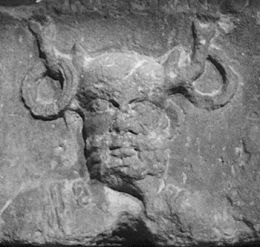
Aliases: Ishkur, Adad, Haddu
Location: Mesopotamia (Iraq), Canaan (Palestine), Ugarit (Syria), Asia Minor? (Turkey?)
Cities: Thebes
Estimated Date: 2500s B.C. – 600s A.D.
He is a storm god
spacer
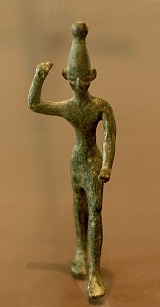
Ba’al Hadad inherited several aspects of the vegetation shepherd god although he is actually a storm/war god equivalent to the Babylonian Marduk, the Hurrian and Hittite Teshub, and the Greek Zeus. In the Ba’al Cycle, or Epic of Ba’al, found in Ugarit just north of Galilee and dated to 1400s –1200s B.C., Hadad is called “Rider of Clouds”, a title that is also used in Psalm 68:4 for Yahweh, a proper name typically translated as “the LORD” in most Bibles. Isaiah uses the same tempest and fire language to describe “Yahweh Sabaoth”, which is translated “LORD of Hosts” in most Bibles but is sometimes given the more appropriate translation “Yahweh of Armies”. Throughout all of these epic cycles of the storm/war god, the ocean is symbolically linked to ever-churning chaos and is thus identified with the enemy. The storm god acts as a national protector by smashing the sea dragon and then constructing the world from its remains, just as the king was to defeat his enemy and construct his nation from the wealth of conquest. Thus the storm god became the national war god and so was promoted to the king of heaven in growing empires over that of old Titan king, Chronos, equivalent to the Canaanite god El the Bull, known in the Bible by its plural form Elohim, which is typically translated as “God”.
He is subordinate to El the Bull, a relationship similar to Yahweh and Elohim in the older parts of the Bible
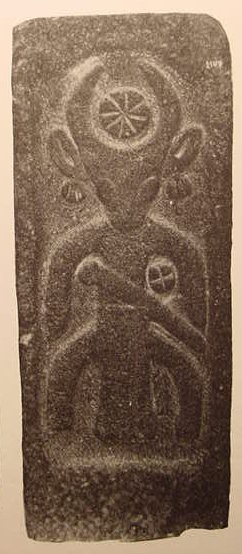
He defeats a multi-headed sea dragon, just like Yahweh and the archangel Michael
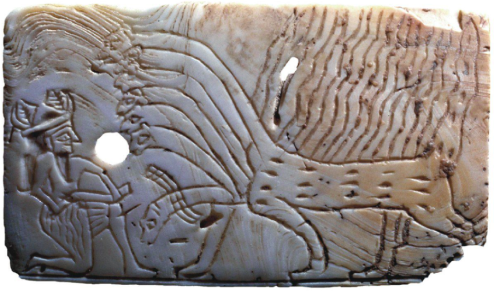
In the Ugartic Ba’al Cycle, Ba’al Hadad defeated the seven-headed sea dragon Lotan, just as Heracles defeated the multi-headed Hydra in his 2nd labor and a dragon Ladon guarding the golden applies of immortality from the Garden of Hesperides in his 11th labor, just as Marduk defeated the sea monster Tiamat in the Enuma Elish creation myth, just as Yahweh crushed the multi-headed sea dragon Leviathan in the books of Psalms and Isaiah, just as Michael defeated the seven-headed red dragon in the Book of Revelation. In the Enuma Elish, Marduk split apart Tiamat to create the world, parallel to the splitting of Leviathan, which symbolizes the splitting of the sea during creation, which in Genesis is a “divine wind” sweeping over the “deep,” tehom, believed by many scholars to be etymologically related to Tiamat. The Behemoth from the Book of Job is its land-based equivalent. After Yahweh became equated Elohim and took over El the Bull’s role as the king god in heaven, the archangel Michael took over Yahweh’s role as the subordinate war angel who battles the seven-headed dragon, Satan.
He ascends a mountain and establishes his heavenly temple
After a victory celebration, Ba’al Hadad climbs Mount Zaphon and erects his temple there in seven days, mirroring the week of creation in Genesis.
He dies and rises again
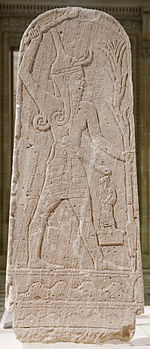 Just as Dumuzi is helped by his sister Geshtinanna and the sun god Utu (called Shamash by the Akkadians), so too is Ba’al assisted by his sister Anath and the sun goddess Shapash, and like Dumuzi, he is ultimtaely killed anyway. El the Bull, Shapash the sun goddess (the female equivalent of the Akkadian sun god Shamash), and Ba’al’s sister Anath (equivalent to Dumuzi’s sister Geshtinanna) mourns his death and he is buried. Anath takes revenge and kills Mot. El then has a dream that Ba’al is alive and Shapash descends to the netherworld and brings Hadad back. He returns to his throne, confronts a resurrected Mot, but this time with El favoring Ba’al, Shapash manages to scare Mot away.
Just as Dumuzi is helped by his sister Geshtinanna and the sun god Utu (called Shamash by the Akkadians), so too is Ba’al assisted by his sister Anath and the sun goddess Shapash, and like Dumuzi, he is ultimtaely killed anyway. El the Bull, Shapash the sun goddess (the female equivalent of the Akkadian sun god Shamash), and Ba’al’s sister Anath (equivalent to Dumuzi’s sister Geshtinanna) mourns his death and he is buried. Anath takes revenge and kills Mot. El then has a dream that Ba’al is alive and Shapash descends to the netherworld and brings Hadad back. He returns to his throne, confronts a resurrected Mot, but this time with El favoring Ba’al, Shapash manages to scare Mot away.
Baal was found dead there in the fields of Shechelmemet, in the land of Deber. The news reaches the ears of El, Father of Shunem:…
For clothing She [Anath] is covered with a doubled cloak.
The mountain in mourning She roams.
In grief, through the forest.
She cuts cheek and chin.
She lacerates Her forearms.
She plows lake a garden Her chest,
Like a vale She lacerates the back.
“Baal is dead!
Woe to the people of Dagon’s son!
Woe to the multitudes of Athar-Baal!
Let us go down into the earth.”
The Torch of the Gods, Shapash, hearkens.
She lifts Aliyan Baal,
On the shoulders of Anath She places Him,
She raises Him into the heights of Saphon.
She weeps for Him and buries Him.
She puts Him in the grave of the Gods of the earth…
…
Shapash descends into the underworld. She enters the relm of Sheol. Upon Her return to the world above, She carries Great Baal with Her.
He and his king, El the Bull, both enjoin festivals of bread and wine where the wine is symbolically associated with blood
Eat bread from the tables! Drink wine from the goblets! From a cup of gold, the blood of vines [or: trees]!
spacer
The invasion of Egypt is sometimes explained by Zenobia’s desire to secure an alternative trade route to the Euphrates, which was cut because of the war with the Sasanian Empire,[4] although the Euphrates route was only partially disrupted. Zenobia’s personal ambition and political motivation to establish Palmyrene dominance over the east definitely played a part in her decision to invade Egypt.[2]
The invasion coincided with, or probably even caused, serious unrest in Egypt, whose people were split between supporting and defying the approaching Palmyrene army.[2] What also made the situation worse for the Romans was that the prefect of Egypt, Tenagino Probus, was at the time preoccupied with naval expeditions against pirates.[2]
The Palmyrenes entered Alexandria, and left a garrison of 5,000, although shortly after, Probus was alerted to the situation in Egypt and quickly returned there.[2] He recaptured Alexandria, but his success was short-lived when the Palmyrene army regained control of the city.[2] Probus retreated to the Babylon Fortress.[5] However, Timagenes, a native of Egypt with knowledge of the land, ambushed the Roman rear and captured the fortress. Tenagino Probus then committed suicide and the Palmyrenes consolidated their dominion over Egypt.[5]
agora, in ancient Greek cities, an open space that served as a meeting ground for various activities of the citizens. The name, first found in the works of Homer, connotes both the assembly of the people as well as the physical setting. It was applied by the classical Greeks of the 5th century BCE to what they regarded as a typical feature of their life: their daily religious, political, judicial, social, and commercial activity. The agora was located either in the middle of the city or near the harbour, which was surrounded by public buildings and by temples. Colonnades, sometimes containing shops, or stoae, often enclosed the space, and statues, altars, trees, and fountains adorned it. The general trend at this time was to isolate the agora from the rest of the town.

Arsu
A deity known from Syrian and northern Arabian lands, being sometimes in male or in female (most often) representation. Arsu was connected with the evening star.
Frequently portrayed as riding a camel and accompanied by his twin brother Azizos; both were regarded as the protectors of caravans. His worship is also confirmed by material evidences in Temple of Adonis, Dura-Europos. In the temple complex there was a relief, which shows Arsu on a camel. The inscription under the figure goes: “Oga the sculptor has made (this to) ‘Arsu the camel-rider, for the life of his son”.[1] It is likely he was associated with the planet Mercuryearly on.[2]
Arsu, a military god identified with the Greek god Ares. Source
<>
 |
(Left) Relief of the god Arsu, with Palmyrene Aramaic inscription reading “Arsu, the camel rider, ‘Ogâ, the sculptor made it for the life of his son”. Traces of black paint survive around the eyes, and the inscription was painted in red; the god is armed with a lance and shield
(Right) Nabu god of wisdom and the art of writing. |
 |
spacer

|
Nabu, biblical Nebo, major god in the Assyro-Babylonian pantheon. He was patron of the art of writing and a god of vegetation. Nabu’s symbols were the clay tablet and the stylus, the instruments held to be proper to him who inscribed the fates assigned to men by the gods
|
|
Nebu (Nabu) is one of the more important minor deities of the Babylonian – Assyrian pantheon. The god Nebo (Akkadian Nab û, “the called”) appears in the Code of hammurabi in the early 2nd millennium b.c. as son of the national god marduk and tutelary deity of the city Borsippa (to the south of the city of babylon) and of its temple Ezida.
|
SPACER
The spiritual significance of public baths for the ancient Romans.

The Roman public baths were one of this mighty civilization’s most monumental architectural feats that lasted for more than a millennium. While the grandeur of this site is often known, the religious significance of these baths for the roman people is seldom realized. Let’s take a brief look at the spiritual value of these baths for the Romans.
Many ancient civilizations attributed the occurrence of what we call natural phenomena to the supernatural or divine. Hot springs, upon which many Roman bathhouses were built, are a perfect example.
Romans discovered a hot springs, around which the Celtic Goddess Sulis was worshiped. Seeing this miraculous display, they accepted Sulis’ validity but amalgamated the Goddess with one of their own, Minerva.

Hence, the temple and all following temples around the hot springs became dedicated to Sulis Minerva. Sulis was the Celtic Goddess of healing waters, whereas Minerva was the Roman Goddess of wisdom. Their amalgam largely retained the traits of Sulis, and the hot springs served as a place of healing and worship.
Hot Spring Temples became sites of pilgrimage as people sought the Goddess for direction, blessings and favors, as well as healings. Roman bath took on immense religious importance. Thought to be a place of healing, people from all over the Roman Empire brought their sick and wounded to Sulis Minerva and bathed them in the healing waters of the bath

They prayed to the Goddess, made animal sacrifices at her altars, and engaged in various other ceremonial practices. One such practice was throwing curse tablets, messages written on lead or pewter, into the sacred spring water. This
As time went on, people began to bring the worship of their own deities to the baths and build altars to them there. They would make sacrifices and other offerings to appease their preferred God. Out of the Roman pantheon, there were three for whom you would frequently find shrines at the baths: Luna (Goddess of the moon), Sol (God of the Sun), and Sulis Minerva. Usually the priests of Sulis Minerva were the only ones allowed to enter this holy place, though the gilded bronze statue of the Goddess could likely be seen via the open gate.

spacer
Monumental Arch of Palmyra
The Monumental Arch was built sometime during the reign of Emperor Septimius Severus, which lasted from 193 to 211 CE; it linked the main street of the Colonnade and the Temple of Bel. The arch was meant to integrate the southern and central parts of the Colonnade as its location marks a change of 30° in the orientation of the street between the Tetrapylon and the Temple of Bel, so to solve this problem the arch incorporated two façades angled apart from one another. (So, it is a two faced arch that serves as a bridge.)
Architecture: circa
The Monumental Arch was unusual from an architectural viewpoint, since it had a double façade, masking a 30° bend between the eastern and central sections of the Great Colonnade. The arch consisted of a large gateway in the centre flanked by a smaller opening on either side.
The arch was decorated with ornate stone carvings, including reliefs depicting plants or geometrical designs. These were similar to those found on other arches built during Severus’ reign elsewhere in the Roman Empire, such as at Leptis Magna in modern-day Libya. The reliefs on the arch were described by UNESCO as “an outstanding example of Palmyrene art,” and they make it one of the most lavishly adorned monuments in the city.
spacer

 Palmyra, Syria, The Temple of Bel. 2nd century AD – Archaeology Illustrated
Palmyra, Syria, The Temple of Bel. 2nd century AD – Archaeology Illustrated
Baal Hammon
Etymology
He is clearly identified as one of the Phoenician deities covered under the name of Baal.[4] However, the meaning of his second name is unclear. Frank Moore Cross argued for a connection to Hamōn, the Ugaritic name for Mount Amanus, a peak in the Nur Mountains which separate Syria from Cilicia.[5] In the 19th century, when Ernest Renan excavated the ruins of Hammon (Ḥammon), the modern Umm al-‘Awamid between Tyre and Acre, he found two Phoenician inscriptions dedicated to El-Hammon.[6]
|
Zondervan Atlas of the Bible (2010): Hammon. General Location Notes. Anchor Yale Bible Dictionary (1992) (Hammon (place)): “in the Wadi el Hamul “. Precise Coordinates Notes. Franḳel, Settlement Dynamics and Regional Diversity in Ancient Upper Galilee (2001) identifies Khirbet Umm el Amed with Awamid. Geo Data. KML (for Google Earth)
|
Others have proposed Hammon as a syncretic association with Libyan-Egyptian god Amun,[7] while a last current has called instead for a connection with the Northwest Semitic word ḥammān (“brazier“), suggesting the sense “Lord of the Brazier”.[6]
Cult and attributes
The worship of Baʿal Hammon flourished in the Phoenician colony of Carthage. His supremacy among the Carthaginian gods is believed to date to the fifth century BC, after relations between Carthage and Tyre were broken off at the time of the Battle of Himera (480 BC).[8] Baal Hammon was known as the Chief of the pantheon of Carthage and the deity that made vegetation grow; as with most deities of Carthage, he was seemingly propitiated with child sacrifice, likely in times of strife or crisis, or only by elites, perhaps for the good of the whole community. This practice was recorded by Greeks and Romans, but dismissed as propaganda by modern scholars, until archeologists unearthed urns containing the cremated remains of infants in places of ritual sacrifice.
He has been identified with a solar deity,[6] although Yigael Yadin thought him to be a moon god.[citation needed] Edward Lipinski identifies him with the god Dagon.[10] In Carthage and North Africa Baʿal Hammon was especially associated with the ram and was worshiped also as Baʿal Qarnaim (“Lord of Two Horns”) in an open-air sanctuary at Jebel Boukornine (“the two-horned hill”) across the bay from Carthage, in Tunisia.[11]
The interpretatio graeca identified him with the Titan Cronus. In ancient Rome, he was identified with Saturn, and the cultural exchange between Rome and Carthage as a result of the Second Punic War may have influenced the development of the festival of Saturnalia.[12][clarification needed]. Attributes of his Romanized form as an African Saturn indicate that Hammon (Amunus in Philo‘s work) was a fertility god.[13]
The Second Coming of Saturn Part 25: Baal Hammon
It is probable that the name Baal Hammon means “Lord of the Amanus,”[4] which refers to a mountain range in southern Turkey just northeast of Mount Zaphon, the mountain sacred to Baal. The Amanus, today’s Nur Mountains (from the Turkish Nur Dağları, “Mountains of Holy Light”), run alongside the Gulf of Iskenderun at the northeastern corner of the Mediterranean Sea, just north of Antakya (ancient Antioch). Zincirli, mentioned above, is the site of ancient Sam’al, about seventy miles north of Antakya. It controlled the northern pass through the Amanus mountains, while Kinalua, capital city of the kingdom of Palistin, about fifteen miles southeast of Antakya, guarded the southern pass.
To be clear, Baal Hammon is not the Baal of the Bible. That was the storm-god, whose proper name was Hadad, Adad, or Addu, depending on where it was written. “Baal” simply means “lord,” and it was used by the Canaanites and Phoenicians the same way we Christians call our God “Lord” instead of “Yahweh.”
But Baal Hammon’s mountains, the Amanus, are only about seventy miles north of Mount Zaphon, home of the storm-god’s palace—a mountain that was probably dedicated to El (Baal Hammon) before it became sacred to Baal (Hadad).
The worship of Baal Hammon continued until well into the Christian era. The Phoenicians built a maritime trading empire unrivaled in the ancient world that lasted from about the time of Ahab and Jezebel in the ninth century BC until the end of the Third Punic War in 146 BC, when Carthage was finally destroyed by Rome. The colony at Carthage was founded by Phoenicians from Tyre in what is modern-day Tunisia. As the Phoenicians extended their influence across the Mediterranean through settlements and trading outposts on the North African coast, southern Spain, and islands like Sicily and Sardinia, the worship of Baal Hammon spread as well. It appears the god and his consort, Tanit, became the supernatural power couple of Carthage around 480 BC, when a disastrous military defeat on the island of Sicily led to the colony’s break with its home city, Tyre.[5]
Tanit, sometimes rendered Tannit or Tinnit, was the Carthaginian version of the goddess Asherah,[6] although some scholars connect Tanit to the other great goddesses of the Canaanite pantheon, Astarte and Anat.[7] But since most scholars accept that Baal Hammon and El are one and the same, identifying Tanit as Asherah is probably correct.
The etymology of her name is interesting, to say the least. “Tanit” is a feminine form of the Canaanite/Phoenician tannin, which means “serpent” or “dragon.” Thus, “Tanit” is literally “Serpent Lady” or “Dragon Lady.”[8] This supports her identification as Asherah, whose epithets rabbat ʿatiratu yammi (“Lady Who Treads on the Sea[-dragon]”)[9] and ḏt bṯn(“Serpent Lady”)[10] are virtually identical.
Tanit was sometimes called Qudšu (“the Holy One”),[11] and she was known by this name in Egypt as well as the Levant from about the time of Jacob through the time of the judges (about 1800–1200 BC). In Egyptian art, she’s usually shown holding snakes in one or both hands.[12]
It’s probably not a coincidence that bṯn is the Ugaritic form of “Bashan,” the land at the foot of Mount Hermon ruled by Og in the days of Moses. The epithet ḏt bṯn could therefore be read, “Lady of Bashan.” (It also means that Bashan literally translates as “Place of the Serpent.”)
While scholars don’t completely agree on the identities and origins of Baal Hammon and Tanit, it is clear that the two, like Kronos, Saturn, and Molech, required a most precious sacrifice from worshipers—their children. In recent years, some scholars have tried to downplay the biblical accounts of child sacrifice, suggesting that they were invented by the Hebrew prophets to justify the conquest of Canaan and rationalize the destruction of Jerusalem and the Temple by Babylon. And God, speaking through the prophets, was very clear about His opinion of child sacrifice:
You shall not give any of your children to offer them [literally, “to make them pass through (the fire)”] to Molech, and so profane the name of your God: I am the Lord. […] Do not make yourselves unclean by any of these things, for by all these the nations I am driving out before you have become unclean, and the land became unclean, so that I punished its iniquity, and the land vomited out its inhabitants.
Leviticus 18:21, 24–25
[Manasseh] burned his son as an offering and used fortune-telling and omens and dealt with mediums and with necromancers. He did much evil in the sight of the Lord, provoking him to anger.[…] And the Lord said by his servants the prophets, “Because Manasseh king of Judah has committed these abominations and has done things more evil than all that the Amorites did, who were before him, and has made Judah also to sin with his idols, therefore thus says the Lord, the God of Israel: Behold, I am bringing upon Jerusalem and Judah such disaster that the ears of everyone who hears of it will tingle.”
2 Kings 21:6, 10–12
For the sons of Judah have done evil in my sight, declares the Lord. They have set their detestable things in the house that is called by my name, to defile it. And they have built the high places of Topheth, which is in the Valley of the Son of Hinnom, to burn their sons and their daughters in the fire, which I did not command, nor did it come into my mind. Therefore, behold, the days are coming, declares the Lord, when it will no more be called Topheth, or the Valley of the Son of Hinnom, but the Valley of Slaughter; for they will bury in Topheth, because there is no room elsewhere.
Jeremiah 7:30–32
But the prophets weren’t alone in their condemnation of the Amorite-Canaanite-Phoenician practice of child sacrifice. Greeks and Romans were appalled by it as well.
We’ve already shared the nightmarish account of Plutarch, who described how the poor of Carthage sold their children to be sacrificed by those with no children of their own. But the wealthy were not exempt from burning their children; according to Diodorus Siculus, the citizens of Carthage responded to a disastrous military defeat in 310 BC to Agathocles, ruler of the Sicilian city-state of Syracuse, by slaughtering hundreds of their children:
Therefore the Carthaginians, believing that the misfortune had come to them from the gods, betook themselves to every manner of supplication of the divine powers.… They also alleged that Kronos [Baal Hammon] had turned against them inasmuch as in former times they had been accustomed to sacrifice to this god the noblest of their sons, but more recently, secretly buying and nurturing children, they had sent these to the sacrifice; and when an investigation was made, some of those who had been sacrificed were discovered to have been supposititious [substitutions].… In their zeal to make amends for their omission, they selected two hundred of the noblest children and sacrificed them publicly; and others who were under suspicion sacrificed themselves voluntarily, in number not less than three hundred.[13]
Next: A Phoenician monument to child sacrifice
spacer
Palmyra Update: Major Restorations Ready to Launch as Global Partners Await Security
Palmyra
On any given Monday morning, at approximately 7:30 a.m. a car carrying highly trained archeologists and two Palmyra National Museum security guards, on weekly rotation, departs the Homs, Syria HQ of Syria’s Directorate-General for Antiquities and Museums (DGAM) along the previously dangerous 160 km Homs-Palmyra road east to Palmyra (Tadmor), the site of wanton destruction the past few years. Caused in the main by Islamic State (ISIS) jihadists who insist that non-Islamic archeological sites offend God who apparently abhors any possible idolatry-if indeed that is what preserving our global culture heritage for those who follow us amounts to. “It’s both propagandistic and sincere,” says Columbia University historian Christopher Jones, who has chronicled the damage on his blog. “They see themselves as recapitulating the early history of Islam.” Simultaneously, ISIS uses looting as fundraisers for military operations.
Since 2015, DGAM archeologists’ travel to Palmyra has sometimes been curtailed and the route closed by the Syrian army given that the area just to the north and south of the highway harbored jihadists camped deep under the vast desert in tunnels as well as dug into nearby hillsides with heavy weapons. On 5/23/2017 the Syrian army informed this observer that ISIS forces have now been pushed back some 50 km into the desert northeast of Palmyra and no longer pose a threat to those visiting the ruins area. The Syrian army two days ago (5/24/2017) announced that they had captured areas to the south of Palmyra and to the east of Qaryatayn in southeastern Homs province. Moreover, this past month Syrian troops, seeking to expand a buffer zone north of the Homs-Palmyra highway have advanced on ISIS positions in the same area with intermittent clashes between the Syrian Army (SAA) and ISIS units ongoing.
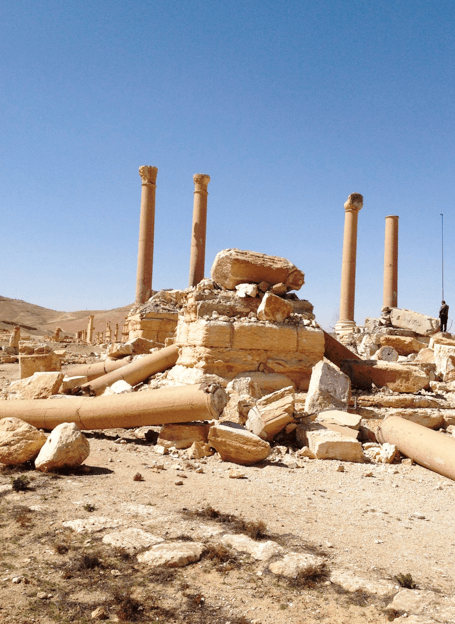 Consequently, an invitation from DGAM for this observer to join the group and again visit Palmyra, one of 300 of Syria’s 10,000 archeological sites damaged and/or looted since the spring of 2011, was most welcomed.
Consequently, an invitation from DGAM for this observer to join the group and again visit Palmyra, one of 300 of Syria’s 10,000 archeological sites damaged and/or looted since the spring of 2011, was most welcomed.
Syria’s current work at Palmyra includes conducting updated assessments of damage by ISIS during their second occupation of the ancient city which lasted for ten weeks between December 11, 2016 and March 2, 2017. Fortunately, this month’s Syrian government assessment shows that ISIS damage at Palmyra is limited to the central part of the facade of the Second Century theater and to the columns of the Tetrapylon, with no new damage to the Tomb of the Three Brothers, Temple of Bel, Temple of Nebo, Camp of Diocletian, the Straight Street, Agora and other monuments. Maamoun Abdulkarim, Syria’s director of antiquities, who had already arranged the transport of some 800 of the ancient statues and artifacts in Palmyra’s museum to Damascus and elsewhere for safe-keeping explained: “This time, they don’t seem to have damaged Palmyra as badly as we feared.”
Photo: fplamb 5/23/2017. ISIS substantially leveled most of the Tetrapylon a group of raised pillars signaling  a crossroads, with only four of 16 columns still standing and leaving the stone platform now covered in rubble. But again, ISIS failed to remove or pulverize the chunks of the columns such that the Tetrapylon will be relatively easily restored. ISIS also left behind most of the rubble at other sites during its first occupation. This means that approximately 80% of Palmyra’s antiquities are in fairly good condition and 15% of those more heavily damaged also can and will be restored.
a crossroads, with only four of 16 columns still standing and leaving the stone platform now covered in rubble. But again, ISIS failed to remove or pulverize the chunks of the columns such that the Tetrapylon will be relatively easily restored. ISIS also left behind most of the rubble at other sites during its first occupation. This means that approximately 80% of Palmyra’s antiquities are in fairly good condition and 15% of those more heavily damaged also can and will be restored.
Photo: fplamb 5/23/2017. As noted above, ISIS also destroyed the carved facade of the ancient Palmyra theatre, where the jihadi group forced locals to watch as it murdered 25 soldiers during the first occupation. If one focuses on the third column from the right, a broken rope is still visible, one of dozens ISIS used to hang prisoners in 2016. This theater was also where musicians from St Petersburg’s Mariinsky orchestra had performed at a “victory concert” after the area was recaptured from ISIS the first time.
Photo: fplamb 5/23/2017. Not reported in the media following ISIS’ 2nd occupation of Palmyra were 14  excavation holes counted by this observer. These struck me as odd given their random locations and absence of evidence that anything was excavated in contrast to other excavation areas around Syria where one sees hundreds of dug holes approximating rows. My tentative assessment is that during their second coming the original 4000 fighters quickly moved south to fight regime forces and try to capture the T4 Airport which is a critical security installation, providing regime forces with close air support. ISIS jihadists were able to storm into the base after seizing security checkpoints in the nearby Mashtal and Qasr al-Hir Districts. Given this priority, ISIS left behind among the ruins of Palmyra only a relatively modest number of forces during this period and these fact likely accounts for the limited ISIS damage to the ruins.
excavation holes counted by this observer. These struck me as odd given their random locations and absence of evidence that anything was excavated in contrast to other excavation areas around Syria where one sees hundreds of dug holes approximating rows. My tentative assessment is that during their second coming the original 4000 fighters quickly moved south to fight regime forces and try to capture the T4 Airport which is a critical security installation, providing regime forces with close air support. ISIS jihadists were able to storm into the base after seizing security checkpoints in the nearby Mashtal and Qasr al-Hir Districts. Given this priority, ISIS left behind among the ruins of Palmyra only a relatively modest number of forces during this period and these fact likely accounts for the limited ISIS damage to the ruins.
The ISIS success in seizing Palmyra the second time after being forced out of the city in March 2016 underlines the limits of airpower against the group and after four days of Russian airstrike and regime shelling Isis was firmly in control of Palmyra. During December 2016, Isis forces swept into Palmyra as the Syrian army and its allies focused on defeating rebels in Aleppo. ISIS remained in control the second time for ten weeks. Privately Syrian army friend’s blame their heavy troop loses on the Russians for letting their guard down at Palmyra. Simultaneously Russian friends in Syria blame the Syrian forces (in private). But publicly they both blame the Americans, without providing cogent detail, for allowing ISIS reinforcements from Raqqa, the de facto Isis capital in northern Syria, as well as not stopping ISIS from coming to Palmyra from the nearby eastern province of Deir Ezzor to move to Palmyra. Key to regime forces and their allies in expelling ISIS the second time was their success attacking from three sides the ISIS forces based in the Citadel on a hill overlooking the ruins. In any event Palmyra is today better guarded than it was last year—by both Russian, Syria and Iranian forces.
Concrete plans to restore Palmyra are largely completed as a result of many months of Syrian consultations with the global community, UNESCO, and UN Specialized Agencies as well as with dozens of archeological associations, Museums, and the Syrian public.
What is now needed is specialized equipment, specialized restoration craftsmen prepared to come to Syria and funding. All are largely available today but most partners, especially from the West want to wait for the violence to end to ensure the safety of their associates who would be working here and also to ensure that restoration work projects will not likely be attacked again.
Thanks to Syrian citizens and officials working in this 3000 year old town, given all the jihadist attacks it has sustained, Palmyra, like many antiquities sites around Syria in is reasonable condition and ready to be restored. More urgent, as Part II of the Update addresses, is the archeological crisis in Aleppo which requires immediate attention. Government cooperation with the local citizenry is needed so that invaluable damaged artifacts and pieces of treasures scattered around are not confiscated and removed as part of the current urgency citizens feel about returning to their smashed homes and start rebuilding with whatever material they can fine.e
spacer
This model is important for monitoring the condition of various objects and exploring sites
MOSCOW, October 19. /TASS/. Specialists from the Institute for the History of Material Culture at the Russian Academy of Sciences plan to hand over a unique 3D model of the city of Palmyra to the Syrian government, which could help restore its cultural heritage sites, the Institute’s Deputy Director Natalya Solovyova told TASS.
“We have completed the 3D model, but we are still working on the geographical information system. We plan to hand it over to the Syrian government,” Solovyova said.
“The first stage has been completed, the 3D model is ready. It is unique, as no one has ever made such 3D landscape models,” she pointed out. “This model is important, first and foremost, for monitoring the condition of various objects, while renovators can use it for exploring sites and also as a working tool,” Solovyova stressed adding that Russian specialists needed about two more months before the model could become operational.
The Institute’s director general noted that it had taken about a year to construct the 3D model. According to her, the specialists who worked in Palmyra in 2016, are eager to go back there to explore the cultural heritage sites that were damaged after terrorists had seized the city for the second time. “We would like to go back there to take footage of the damage done during the second seizure, because the data that we have was collected after the city had been liberated for the first time. And now, after exploring the sites, we will be able to say exactly what damage the city suffered after the second seizure – this is the reason why we would like to go there once again,” Solovyova explained.
“We will discuss this issue, and if we have an opportunity we will go there again and take footage of the new damage, since apart from explosions, there was also predatory excavation. We still need to assess its scale,” she said.
According to Solovyova, Russian experts will continue assisting in the restoration of Palmyra’s historical heritage.
Symbol of civilization
Palmyra is an ancient city located in Syria. It was an important hub along ancient trade routes, particularly the Great Silk Road, in Western Asia. Its heyday stretched from the 1st-3rd century AD, when a number of architectural monuments were built in the city, which are preserved in the desert up to this day.
Palmyra’s architectural museum complex is ranked among UNESCO’s World Heritage Sites.
Militants of the Islamic State terror group (outlawed in Russia) first captured Palmyra in May 2015. In late March 2016, the Syrian government forces, supported by the Russian Aerospace Force, liberated the city, but nine months later it was retaken by the terrorists. On March 2, 2017, Russian Defense Minister General Sergey Shoigu reported to President Vladimir Putin that the operation to free Palmyra had been concluded.
s
Russia Gifts Amazing 3D Model of Ancient City to Syria (Palmyra) – Great Video
“Various nations and religions peacefully coexisted in ancient Palmyra: Greeks, Arabs, and Arameans, which was emphasized in the architecture. The barbarians destroyed them, but they can’t destroy the memory partly thanks to such projects as the 3D model.”
This post first appeared on Russia Insider
 One of the most saddening aspects of the war in Syria is not only the loss of life, but the tragic destruction of her ancient culture. In this video, the Russian news delves into what Russia is doing preserve Syrian Culture (full transcript below).
One of the most saddening aspects of the war in Syria is not only the loss of life, but the tragic destruction of her ancient culture. In this video, the Russian news delves into what Russia is doing preserve Syrian Culture (full transcript below).
Russian experts have begun creating models of Palmyra to prepare for its inevitable reconstruction after total victory over the terrorists is assured. This is a subtle reminder of who will be favored in the massive and lucrative reconstruction projects to be held after the War.
This time, America doesn’t get to destroy a country and then rebuild it while charging exorbitant interest rates.
Check out this great video and full transcript at the bottom of the article:
The unique digital 3D model of ancient Palmyra is now available online for everyone. It was created at the Institute of History of Material Culture of the Russian Academy of Sciences (IHMC RAS). This is the world’s most accurate and detailed digital model of the current state of the monument, which can help in the further study of this UNESCO World Heritage Site. Earlier it was handed over to the Directorate-General for Antiquities and Museums of the Syrian Arab Republic during the St. Petersburg International Cultural Forum.
Remotely, without going to the monument, you can plan any work: restoration, research, archaeological works. This is a universal scientific tool that surpasses all methods that have been used before. The collected data helps to look at the landscape differently. A detailed elevation map allows archaeologists and historians to plan further work. All received materials will be combined into the Palmyra geographic information system – a project on which we continue to work and which is being implemented thanks to the Russian Geographical Society. The geosystem will become a tool for managing the monument not only for scientists, but also simply for the curious people,” said Natalya Solovyova.
You can see the 3D model of Palmyra here.

Palmyra is a unique part of Syria, the Greco-Roman ruins remind the world of Syria’s diverse, multicultural background. The Syrian People are not ethnically homogeneous but consist of a mosaic of different peoples blended into the land including Arabs, Greeks, Armenians, Kurds, Assyrians, and much more, even a small population of Ukrainian-Russians on the coast, often who married into Syrian families.
Although the site was inhabited by different cultures since the Neolithic period, Palmyra’s ruins are a reminder of the ancient Christian culture of Syria as well, via the Roman Empire. With Russian help, Palmyra will rise again.
Syrian Christians to this day are occasionally called “Rum” (Romans) by Muslims, and the destruction of Palmyra by ISIS shows not only their brutality, but their dedication to a racist, anti-Syrian ideology of destroying the multicultural diversity of the beautiful secular republic and reducing it to a Sunni-Arab quagmire. Never mind the fact that the majority of Syria is Sunni and opposed to the terrorist occupation of the country.
Just like when the CIA-funded Mujaheddin destroyed the ancient Buddha statues of Afghanistan, these CIA funded Barbarians thought they destroyed Palmyra, but thanks to Russia’s ingenuity and Syria’s resolve, Palmyra will yet again rise like a Phoenix.
Video Transcript:
Anchor:
Ancient Palmyra, close and three-dimensional. A large-scale project was completed by a group of specialists in St. Petersburg. Pearl of the Middle East, torn by ISIS vandals and fanatics for several years, is now controlled by the government forces. And now scientists from all over the world again began to develop reconstruction plans for the ancient city. A new 3D model of Palmyra will be extremely helpful, of course. Suleima Zarif met with the developers.
Correspondent:
The scientists didn’t sleep this night, they made the finishing touches before the presentation. A hard, almost round-the-clock work at the Institute for the History of Material Culture lasted a year. And here is the result: the world’s first detailed 3D model of Palmyra.
Natalia Solovieva, deputy director of the Institute:
“They work with individual things and objects, but such a huge territory represents huge scientific value. Restorers and archaeologists can work with it, it’s very helpful for monument protection bodies.”
Correspondent:
The 3D model covers a huge territory of 13 square kilometers, it’s like 8 Luzhniki complexes. At the same time, you can see the smallest details from two centimeters, zoom in, rotate every stone lying on the ground. And after the invasion of terrorists, Palmyra actually turned into a pile of stones.
Yegor Blokhin, junior researcher:
“The valley of the funerary towers. Unfortunately, all tall buildings there are destroyed. There were two and even three-storied buildings. They were a sort of mausoleums with coffins, with fine frescoes, painted walls, bas-reliefs.”
Correspondent:
Russian scientists spent 3 days in Palmyra last fall. They carried out a detailed aerial survey. They took a total of 20,000 photos, which became the basis of the model. It’s a virtual tour of Palmyra.
Here is the main Temple of Bel which was blown up and can’t be restored. And the Temple of Baalshamin is also destroyed, but disintegrated into large blocks that are possible to assemble. In a special computer program, to begin with.
Now it’s dangerous for scientists to work on the territory of Palmyra. Using the model, scientists can start restoration without leaving their offices. And when Syria is completely liberated from the militants, they can come and implement their projects.
Various nations and religions peacefully coexisted in ancient Palmyra: Greeks, Arabs, and Arameans, which was emphasized in architecture. There are numerous temples erected in honor of the gods of all cultures known at that time. The barbarians destroyed them, but they can’t destroy the memory partly thanks to such projects as the 3D model.
Suleima Zarif, Evgeny Kostin, Alexander Burushkov and Galina Orlova for Vesti from St. Petersburg.c
Fireworks Display Above the Gas Fields of Palmyra in Honour of Russia Day
21:04:37
12/06/2017
spacer
In a strategic move this week, the state Hermitage Museum announced that Russia has partnered with Syria to restore 20 cultural artifacts from the National Museum of Palmyra that ISIS attempted to destroy over the last four years. A coalition will also look at rebuilding the historic sites of Palmyra damaged or destroyed by ISIS forces.
A group consisting of UNESCO, Russian experts, the Aga Khan Foundation and conservators from the National Museum of Oman will work with the Hermitage on the restoration. Hundreds of cultural sites in Syria have been damaged by ISIS, noted a 2014 U.N. report, among the many devastating tolls in war-torn Syria.

The Hermitage statement reads, in part:
On 25 November 2019, in the Syrian Directorate-General for Antiquities and Museums, agreements were signed on collaboration between the Directorate-General and the Hermitage and the Directorate-General and the Saint Petersburg-based Institute of Material Culture. Both agreements are a tangible step in the significant development of museum and research relations between Russia and Syria.
In their specifics, these agreements are aimed at producing a master plan for the regeneration of the Palmyra Museum as a basis for the creation of an innovative 21st-century museum-preserve on the historical territory of the site and they envisage:
- the creation of a 3D geo-information system of the Palmyra archaeological site for use in the museum and tourist centre of Palmyra (the system has been created and passed on to the Directorate-General for Antiquities and UNESCO)
- the creation of a set of architectural reconstructions of the original appearance of Palmyra’s architectural monuments (created by Maxim Atayants’s studio and passed on to the Directorate-General for Antiquities and UNESCO)
- providing working visits to the Hermitage for Syrian specialists for the exchange of experience in the restoration of Palmyran artefacts, the preparation of exhibitions and publications devoted to Palmyra, and discussion of the future concept for the Palmyra museum
- working visits by Syrian archaeologists to Hermitage and IMC expeditions in the field with the aim of preparing for the restoration of the Palmyra Museum.
In the longer term, the development of this agreement envisages:
- joint work by the Hermitage and the National Museum of Oman to restore 20 Syrian artefacts, mainly from Palmyra, as a step towards preparing the display of the Palmyra Museum
- stimulation of an international campaign for the regeneration of Palmyra
- the creation and international discussion of a project for an innovative Museum and Museum-Preserve at Palmyra
- the formation of an international initiative expert group under the direction of UNESCO and the Syrian Directorate-General for Antiquities and Museums with the participation of the Hermitage and the Aga Khan Foundation
- expert support from the Hermitage for projects to develop Palmyra-Tadmur, the Citadel of Damascus and the historical buildings of Aleppo.
On the same day, the exhibition “Two Palmyras” was formally opened at the National Museum in Damascus in the presence of Russian Ambassador Alexander Yefimov. Mikhail Piotrovsky gave a lecture on “The Greater Hermitage in the Northern Palmyra. The 21st Century”.
An official meeting between the Russian delegation and the Syrian Minister of Culture, Mohammad al-Ahmad, was devoted to the development of the agreement. The delegation also participated in the opening of the Days of Syrian Culture in Damascus.
spacer
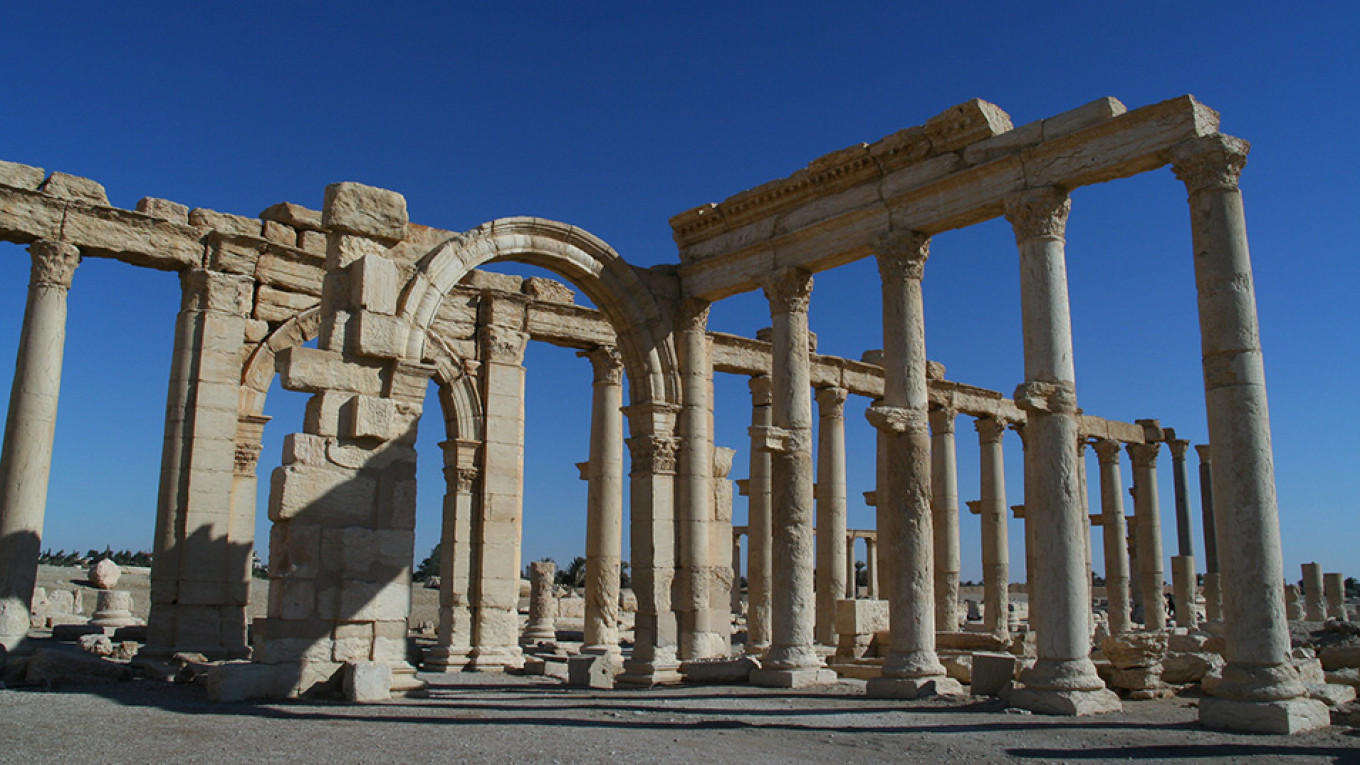
Russian and Syrian state museums have signed two agreements to begin restoring the ancient city of Palmyra after it was heavily damaged by the Islamic State, the State Hermitage Museum in St. Petersburg has said.
Aided by Russian airstrikes, the Syrian army captured Palmyra from the Islamic State twice in March 2016 and March 2017. The terrorist group had destroyed several centuries-old monuments in Palmyra, including the facade of its Roman Theater, the Temple of Bel, the Tetrapylon and the Monumental Arch, during its occupation of the site.
“We are preparing for the day after tomorrow, it’s not yet possible to do anything tomorrow,” Piotrovsky was quoted as saying about the project’s timeline at a signing ceremony in Damascus.
The agreements’ long-term goals entail restoring 20 Syrian antiquities primarily from Palmyra and launching an international campaign to restore the ancient city, the art news website reported Wednesday.
One was signed between the Hermitage and Syria’s authority for museums and antiquities, and the other between Syria’s museums authority and the Russian Academy of Sciences’ history of material culture institute.
Piotrovsky had said in August that it would take around two years to restore the National Museum of Palmyra. He vowed that Russia would help restore the Palmyra museum but not the damaged ancient monuments.
In 2017, Piotrovsky presented a 3D model detailing a 20,000-square-meter area of Palmyra to Syria to help restore the ancient city. Russian experts created the 3D model in about a year using photographs taken on the ground after Palmyra’s initial liberation.
Russia organized an international press tour of Palmyra in April 2016, which included a concert performance featuring Sergei Roldugin, a close friend and confidante of President Vladimir Putin.
This year, two Russian tour operators began offering travel packages to Syrian cities including Palmyra, though they noted that demand is not high.
Islamic State is a terrorist organization banned in Russia.s
Business Type: Natural Stone Country/Region: Russian Federation
spacer

The Russian government recently announced that it will partner with the Syrian government in reconstructing the ancient temple to the pagan god Ba’al in Palmyra. If successful, the project will necessarily mark the third incarnation of the Roman Victory Arch of Palmyra which an ancient Jewish source states must fall and be rebuilt three times before the arrival of the Messiah.
Mentioned more than 90 times in the Bible, most notably when Elijah defeated the priests of Ba’al, also known as Moloch, in a contest to bring down fire from heaven to burn a sacrifice, Ba’al became the archetypical form of idol worship. Pantheistic, his adherents worshipped Mother Naturewhile denying the existence of a creator. Followers of Ba’al engaged in bisexual orgiesand sacrificed human infants, burning them alive. Anthropologists conjecture that the child sacrifice was to cull the population after the inevitable outcome of wanton sexuality.
Mikhail Piotrovsky, the director of the State Hermitage Museum in Saint Petersburg, announced last week that his institution and the Institute of the History of Material Culture of the Russian Academy of Sciences signed agreements in Damascus with Syria’s Directorate General of Antiquities and Museums (DGAM) will begin restoring the ancient site.
The Hermitage posted a statement on its website ten days ago saying, “Both agreements are a tangible step in the significant development of museum and research ties between Russia and Syria.”
The project will also be under the auspices of the United Nations Educational, Scientific and Cultural Organization (UNESCO). UNESCO was involved in previous Palmyra projects that focused on idolatry. In November 2017, UNESCO teamed with the Institute for Digital Archaeology (IDA) in the reconstruction of a statue of the pagan goddess Athena. The statue was presented at an exhibit “The Spirit in the Stone,” at the United Nations’ headquarters in New York City. The exhibit described Athena as “synonymous with reason, refuge and the rule of law, all of the same values on which that historic institution was built,” but the spear lying at the statue’s feet belied her more common association as the goddess of war. Some scholars believe the Greek goddess was based on the Mesopotamian goddess al-Lat.
In 2016, the IDA used 3-D printing technology to reproduce a 20-foot full-scale replica of the Arch of Palmyra, a Roman victory arch that stood in front of the temple for 1,800 years. The first modern reappearance of the Arch of Palmyra was in London’s Trafalgar Square in 2016, when it was erected for UNESCO World Heritage Week. The unveiling coincided with the beginning of a 13-day period known in the occult as “the Blood Sacrifice to the Beast,” the most important holiday for those who worship the god Ba’al, celebrated with child sacrifice and bisexual orgies. The arch was unveiled on April 19th, the holiday of Beltane, the culmination of the 13-day period.
Also known as May Day, Beltane is an Anglicized reference to the god “Ba’al.” An annual Beltane Fire Festival is held in Edinburgh and in other parts around the globe as part of ancient Gaelic culture. In an unfortunate misunderstanding of the festival’s roots, they are frequently billed as family events, with children being given special discounts.
In Jewish tradition, the Arch of Palmyra may be alluded to as a harbinger of the Messianic era. An arch that is repeatedly built up and destroyed is described in the Talmud(Tractate Sanhedrin 78a).
The disciples of Rabbi Yossi the son of Kisma questioned him, asking when the son of David (the Messiah) will appear. And he answered: I am afraid you will request me a sign as well. And they assured him that they would not. He then said to them: When this gate will fall, be rebuilt and fall again, be rebuilt again and fall again. And before it will be rebuilt for the third time the Messiah will appear.
Rabbi Shlomo Yitzchaki, a preeminent medieval rabbi known by the acronym Rashi, explained this section of the Talmud, stating that the arch described by Rabbi Yossi was “a Roman arch in a Roman city.” The arch in Palmyra was indeed a Roman victory arch built when Palmyra was a Roman city.
If the Russian-UN-Syrian triumvirate succeeds in recreating the Roman Victory Arch in Palmyra, this will mark the third incarnation of the arch; the original being the first, the IDA digital recreation being the second, and the soon-to-be creation being the third. (That is absurd. The IDA arch did not fall.)
The arch also appeared in Washington D.C. during the Brett Kavanaugh hearings. It is interesting to note that one of the methods of serving Ba’al was by sacrificing infants and one of the major objections to Kavanaugh’s appointment to the Supreme Court was his anti-abortion stance.
The recreated Arch of Palmyra has appeared at several occasions connected with world government gathering.
By advocating for reconstructing a temple of Ba’al, the UN is violating its Biblical mandate since the third Noahide law is a prohibition against idolatry.
Palmyra was listed as a world heritage site by UNESCO in 1980, which described the temple as “one of the best-preserved and most important religious edifices of the first century in the Middle East.” Palmyrais approximately 370 miles awayfrom two other UNESCO Heritage sites listed as having Muslim significance: Jerusalem and Hebron.
spacer
Creating The First Vision Stained Glass Windows For The Palmyra Temple
In all the work they have been privileged to do for the Church of Jesus Christ of Latter Day Saint temples, The Palmyra New York Temple project remains a tender and wonderful experience for both Gayle and Tom Holdman. This is because it was the first project they did for their own Faith, and also because of the sacred nature of the project, depicting the origins of the church.
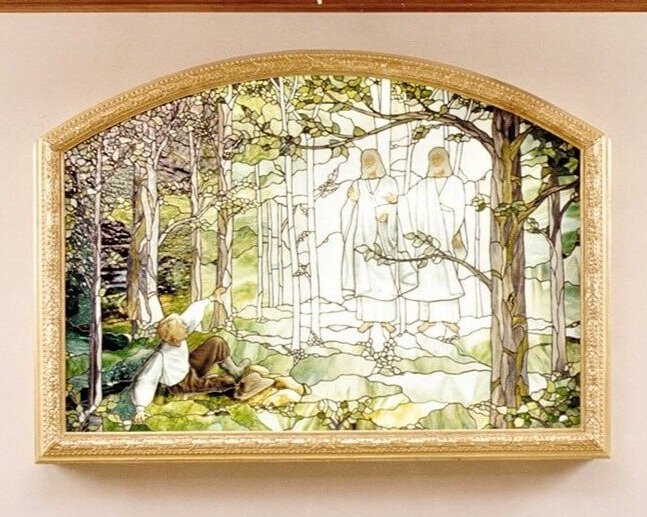
Having the task of depicting an experience that was stated to “defy all description” by Joseph Smith himself, was an overwhelming awareness that Tom and Gayle will never forget. The couple made it a matter of sincere prayer. Tom also sought for distinct insight for the temple design.
A distinguished window was needed for the temple, one that would make patrons feel the wonder and awe that Joseph sensed on that lovely morning. After much pondering and reflection, Tom and Gayle used this objective to blend the vision of Heavenly Father and His son, Jesus Christ in many aspects of the temple glasswork.
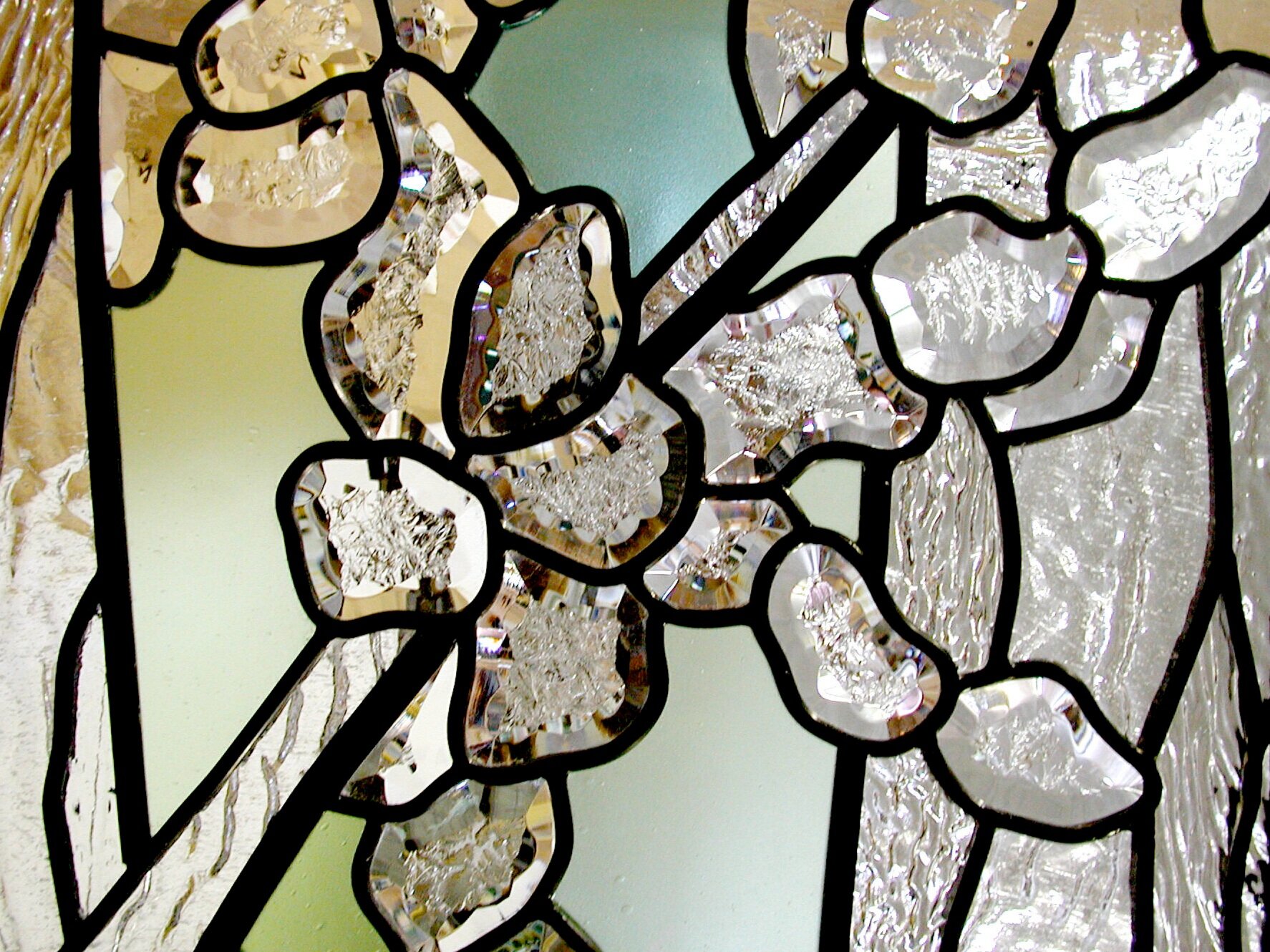
For example, the edges of crystal leaves were sloped or beveled for each exterior window, refracting the light to symbolize the glorious light beaming through the trees draping the Father and Jesus appearing as if the foliage were on fire. This allows temple patrons to imagine what Joseph might have felt and experience that wonder for themselves. Each of the 108 windows installed in the temple represent the grove and symbolize how each individual may have their own personal witness to the truth taught in the temple, just like Joseph learned truth in the Sacred Grove.
Patrons to the temple can also discover another representation of the First Vision in the skylight above the baptistry. This octagon window makes the viewer feel as if they are gazing up through the trees with a glimpse of the blue sky on the outer edges and a glorious yellow and white center, as if you are seeing the light shining down on you in the font.

Although currently, the Holdmans have designed and created glasswork for dozens of temples around the globe, beginning with such a quintessential and history-compelling temple has shaped their dedication and love of this work from the beginning. Gayle and Tom Holdman’s testimonies grew of the First Vision grew as they worked together on these sacred windows and the knowledge from this event has given them great insight to the origins of their religion.

Tom has expressed how each opportunity they’ve had to create art glass with any precept of the gospel expands their gratitude and knowledge of that principle. He calls the First Vision project, “Intimately personal” and yet “profoundly grand”. Working on those glass art pieces for the Palmyra temple allowed the Holdman’s to feel the Spirit many times bear witness that the First Vision really happened, as well as the ensuing revelations and miracles associated with the Restoration.
Both Gayle and Tom hope that this work will continue to suggest to viewers, thoughts about the eternal impact of the First Vision and how it is eternally meaningful to each of Heavenly Father’s children on earth.
Today we, Atayants Architects, want to present the results of our Temple of Bel reconstruction.
This remarkable date this year marks a memorable event – the opening in the State Hermitage Museum of an exhibition dedicated to the reconstruction of the UNESCO heritage site of the Bela Temple in Palmyra (Roman Empire, 32 AD), which was completely destroyed in 2015.
The digital reconstruction was done entirely by hand in Blender 3D based on numerous references, drawings, satellite imagery, and photogrammetry of objects captured at the scene of the tragedy in the paramilitary zone, and it took several years to process and put everything together.
This project is powered by the fascinating ability of Blender to handle complex modeling workflows, such as
- Multiref modeling, provided by tools such as Layers (reconstructed as a QCD system, as part of the Collection Manager addon, and used as an industry-unique flexible reference management system)
- Stripe modeling workflow, which integrates retopology and organic modeling into a single workflow.
Details are available in the video (Russian only).

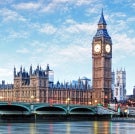
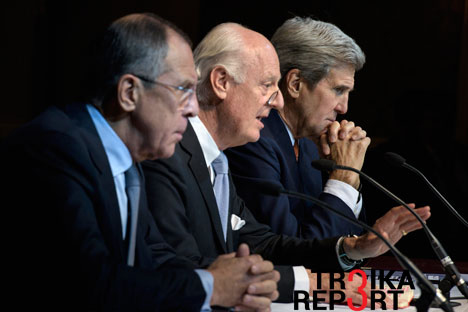

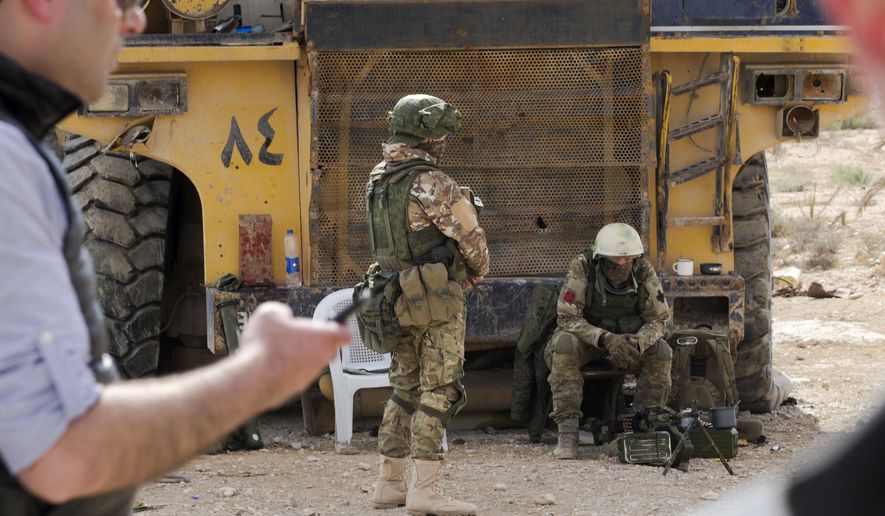

 A 2015 photo shows the Tetrapylon (Monumental Entrance), which was reconstructed after 1963 by the Directorate of Antiquities of Syria, in the ancient oasis city of Palmyra. The ancient structure has reportedly been destroyed by ISIS.
A 2015 photo shows the Tetrapylon (Monumental Entrance), which was reconstructed after 1963 by the Directorate of Antiquities of Syria, in the ancient oasis city of Palmyra. The ancient structure has reportedly been destroyed by ISIS.




 Funerary Sculpture
Funerary Sculpture Malakbel and the Roman Sol Invictus
Malakbel and the Roman Sol Invictus
 nymphaeum
nymphaeum



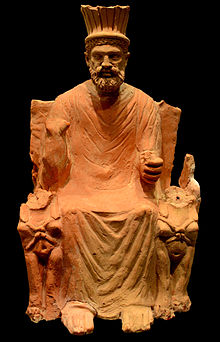









 Russian Federation
Russian Federation





